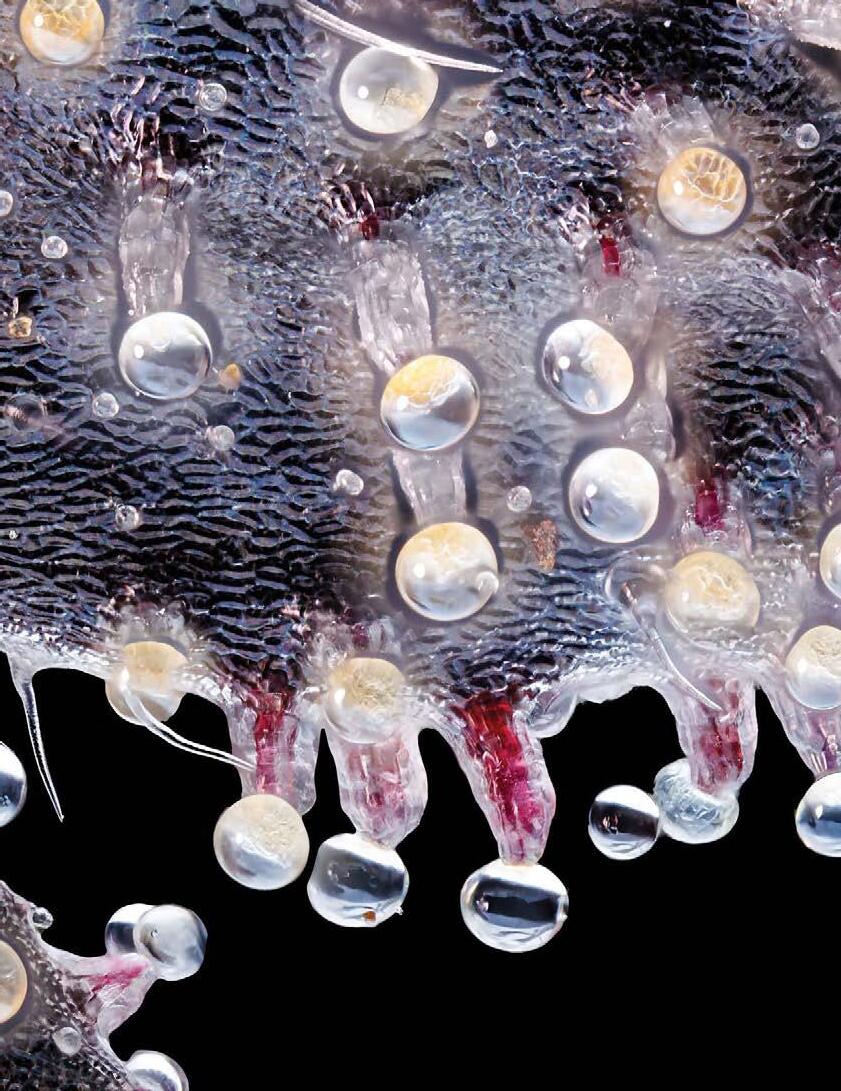






















is the creative force behind J7creative, an award-winning branding and packaging studio known for pushing boundaries and turning heads. With a career spanning over 25 years, Joshua has built a reputation as a fearless designer who thrives on bold ideas, unexpected solutions, and a deep love for the craft of visual storytelling. From launching disruptive cannabis brands to shaping national CPG packaging, his work is defined by outside-thebox thinking and a sharp eye for what makes people stop, look, and remember. But at the heart of it all is a genuine passion for collaboration, culture, and creating work that connects. Joshua’s approach blends bigpicture strategy with down-toearth execution—a balance shaped by years of handson experience and a lifelong obsession with art, music, and design that dares to be different.

Dustin Hoxworth : Tell me about the first time you ever tried psychedelics. Set, setting, and details of what it was like.
Josh Jacob s: Oh man. The first psychedelic I tried was a sugar cube of acid, although it was more of a glob than a cube. It was a Friday after school, and I didn’t really know much beyond the idea that you could hallucinate. It all started when the bathroom tiles came alive. The plan was to go to a movie (Fair Game with Cindy Crawford), but first we stopped to pick up a friend. I waited outside by the pool, thinking it had been five minutes. It turned out to be two hours. I watched the trees dance and the world come alive. The second the lights went down in the theater, I had to leave. After wandering around for a bit, I ended up sitting in the hallway, completely immersed in the carpet highway at eye level. Honestly, I remember most of my trips with that much detail.
DH : What inspired you to create this amazing illustration for the Psychedelics Edition of FNM?
JJ : First of all, thank you for the opportunity to celebrate the world of psychedelics with this piece. I started with the idea of reversed reality, and how you can travel the universe and beyond without ever leaving your bed. Tripping in nature is amazing, but the idea of lying down, watching the walls melt away, and seeing anything your mind can imagine will always resonate with me. Everyone knows the power of mirrors and psychedelics. Are they portals to another dimension? Am I the reality, or am I peeking into one? It’s all so fun to think about. Psychedelics have definitely shaped my creative aesthetic, but interestingly, I feel like my work has become even more psychedelic since getting, (Cali) sober. I’ll always advocate for the healing power of psychedelics, but they need to be approached with care and respect.



Welcome to the psychedelic issue of Fat Nugs Magazine. Within these pages, we seek to celebrate the many kinds of plant medicine and chemical formulations that deliver us into non-ordinary states of consciousness.
Cannabis blazed a path forward that psychedelics are now following. Some of the first states to legalize weed have taken brave steps to decriminalize or even medically legalize certain psychedelic substances; ketamine is legal in 34 states, psilocybin in 3.
In 2025, over half of Americans live where cannabis is legal, but a decade ago, that would have been unthinkable. Currently, Colorado, Oregon, and New Mexico are building frameworks for medical psilocybin―three very different programs sure to inspire voters in other states as much as the first cannabis
programs did. What will the landscape look like for psychedelics in 2035?
Like cannabis, most psychedelics enjoy an undeserved status as Schedule I substances, with “no currently accepted medical use and a high potential for abuse.” LOL
The psychedelic era of the mid-20th century was driven by psychology’s interest in these substances to treat mental disorders, like trauma and alcoholism, that pharmaceuticals seemed unable to help with. LSD got so mainstream in the 1950s that even TIME Magazine wrote about it. But what happened is a familiar story for anyone in the cannabis industry— these substances were made illegal and immoral to demonize and discredit the communities associated with them.
Thankfully, the pendulum has swung back. Today, MDMA and LSD are being used in clinical trials across the USA, exploring dozens of potential medical benefits, from treatment for PTSD and eating disorders to generalized anxiety and even coming to terms with terminal diagnosis. Outside of the US, ibogaine and ayahuasca are being studied for their beneficial effects in treatment for addiction. And beyond their medical application, these studies barely scrape the surface of the powerful spiritual benefits these substances can hold.
Whether you are a seasoned psychonaut or merely curious about psychedelics, you’ll find something to love and learn from within these pages.
It is with enormous pleasure and pride that I bring you the Psychedelics Issue.


“Psychedelics are not suppressed because they are dangerous to users; they're suppressed because they provoke unconventional thought, which threatens any number of elites and institutions that would rather do our thinking for us.”
—Terence McKenna

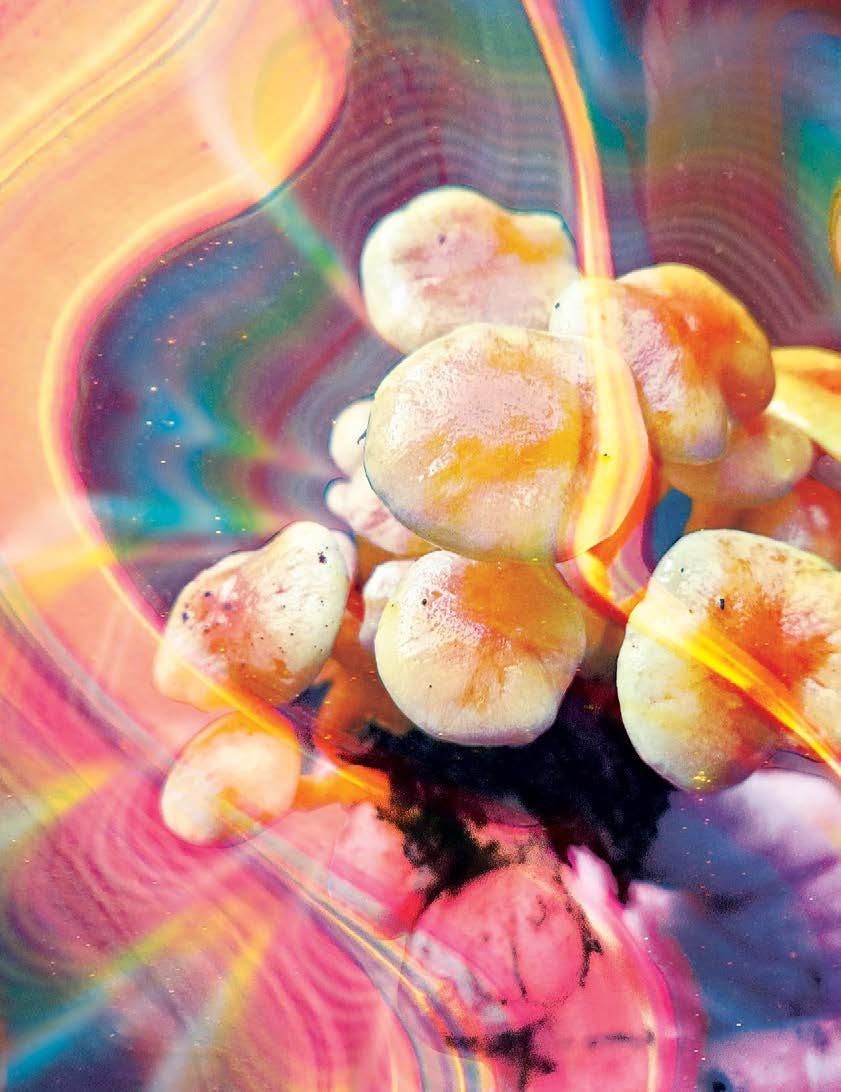
”
“The psilocybin experience is a way to connect with the universal consciousness and tap into the power of the universe.
—Alex Grey
Pg. 8 Bud Backstories: Green Crack By Ali Lopez
Pg. 12 The Trippy Butterfly: Mushroom Iced Tea Recipe By Kelly Kreutzer
Pg. 14 How Microdosing Mushrooms Helped Me Be Less Bitchy By Isabella DeChard
Pg. 20 Mushroom Magic: How To Set Yourself Up For A Good Trip By Jessica Reilly-Chevalier
Pg. 26 We Are The Medicine: An Ayahuasca Experience By Guy Borgford
Pg. 30 Be Cautious Consuming Cannabis After Smoking The Toad: Cannabis Can Lead To A Bufo Alvarius Reactivation By Adam Miezio
Pg. 34 Stop Grouping MDMA With Psychedelics By Bethany Niebauer
Pg. 40 Homegrown With Jim Berry
Pg. 46 Psilocybin, Education, And Harm Reduction In The Heart Of Denver By Bethany Niebauer
Pg. 54 Tip Of The Trip By Jessica ReillyChevalier & Dustin Hoxworth
Pg. 56 TripTrip: A Mushy Love Story By Samantha Dietz
Pg. 60 Bridging The Psychedelic Divide From The Divide From The Underground To A Regulated Economy By Jodi Green, Matthew Brockmeier, and Karina Bashir, Antithesis Law PC
Pg. 66 Grandmother’s Calling: An Ayahuasca Story By Rob Sanchez
Pg. 70 The Chemistry Of Joy: A Conversation With Neuropharmacologist And Psychedelic Strategist Stephanie Karzon Abrams By Sara Payan
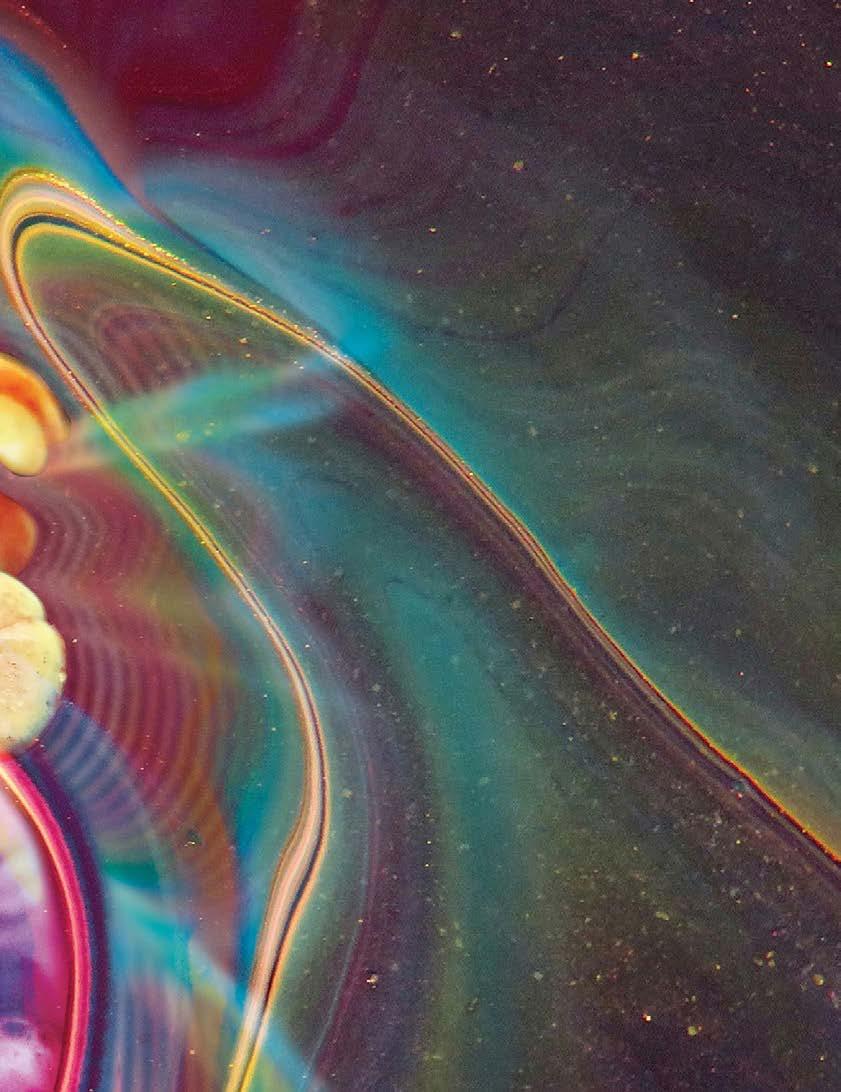
DUSTIN HOXWORTH, Founder
JESSICA REILLY-CHEVALIER , Editor-in-Chief
DANIEL CRAWFORD, COO
NICK SCLAFANI , VP of Sales
CHRISTINA AYDT, Lead Designer
ERIN CULLISON, Designer
JUNE BLANKIN, Account Manager/Event Coordinator
HOLLIS DOHERTY, Editor
SAMANTHA DIETZ , Social Media Specialist
BETHANY NIEBAUER, Staff Writer
Photographers: KYEA MOFIRE
PAOLA TELLO
DERRALL PEACH
CHRIS BIRDSONG
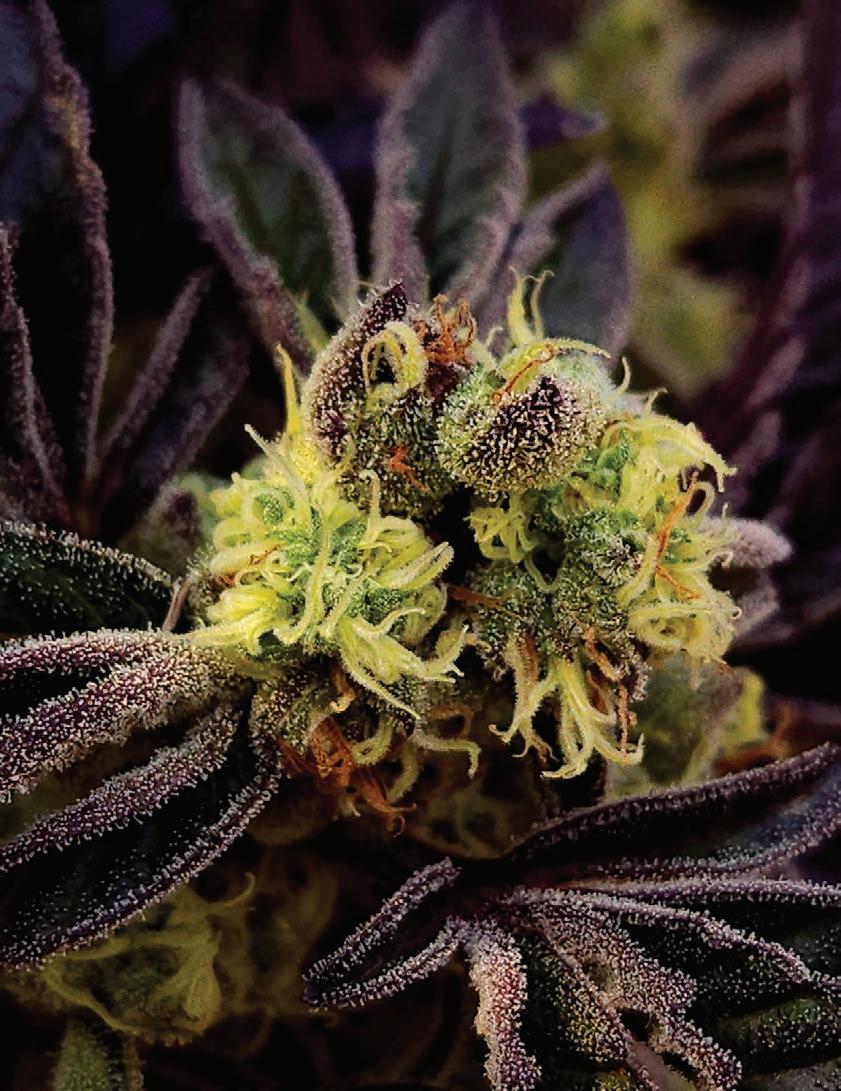

By Ali Lopez
While you’re perusing your dispensary’s menu or checking out what’s hot in cannabis, some names can stick out and get stuck in your head. Ever since I heard of Green Crack, I haven’t been able to stop thinking about it. It’s a pretty aggro name, especially when you’re lining it up next to much cuter counterparts like Wedding Cake, Blue Dream, or Cherry Pie. So, where did this name come from, and is the strain as crazy as the name implies?
The story of Green Crack starts out way more low-key than you’d expect. Back in the 90's, a grower named Cecil C was cultivating a strain he simply called Cush or Green Cush in Athens, Ohio. I’m guessing the C in “Cush” was inspired by his name, but it’s never been confirmed. Cush had quite the energizing buzz, which caused a lot of buzz about it in the cannabis scene. Cecil himself didn’t want to grow and sell Cush across the country, but the demand was significant. So he took to this new thing called the internet and started selling clones.
The clones spread Cush all over the states, and the strain eventually made its way to the Golden State of California, home to one of the world’s most popular potheads, Snoop Dogg. Snoop took one hit and decided Cush needed a rebrand. He called it Green Crack because the high hit so hard and so fast that it felt like a jolt of pure energy.
groups that saw how profitable it could be to grow and move in the 2000's and 2010's. If you “had a guy” during that time, he probably had Green Crack at some point. Even with the shady side, its popularity means it shows up more and more on dispo menus. Some places still use Green Cush or Green Crack, while Canada has renamed it Rise. Just don’t get it confused with Green Kush with a K, which is a cross of Green Crack and Purple Kush. Cannabis names are a trip, huh?
By 2017, Green Crack had gone fully mainstream, with Rolling Stone calling it one of the best strains of the year. It hyped it up as “the weed equivalent of a strong cup of coffee.” Not bad for a plant that started out as humble Cush in Ohio.

But the new name gets a little complicated. It stuck, but not without pushback. In the 80's and 90's, the crack epidemic led to harsh drug laws that hit Black and Latino neighborhoods the hardest, tearing families apart and putting people behind bars for decades. Calling weed “Green Crack” rubbed some folks the wrong way, including those who are working to undo cannabis’s incorrect association with hard drugs, and it still sparks debate in cannabis circles today. Some people stick to calling it by its original name, Green Cush, to avoid the baggage. Either way, the name’s history is a part of what makes this strain stand out, for better or for worse.
Name controversy aside, Green Crack spread like wildfire, likely because of how easy it is to grow. This strain is cloneonly, flowers fast (about seven to nine weeks), and thrives indoors or out. Those bright green buds with neon orange hairs are hard to miss and hard to mess up.
That dependability made Green Crack a favorite for a lot of people, including, not so glamorously, some organized crime
Get ready to get shit done. This strain is a potent sativa-dominant hybrid that leans hard into its energetic side. With THC levels that can hit up to 25%, it kicks the door open and tells you to get moving.
People love Green Crack for its clear, uplifting buzz that somehow manages to feel both focused and a little trippy. Some say it’s like downing a strong cup of coffee, (Rolling Stone must be onto something) but with a side of skunky, citrusy mango. It’s the kind of high that’s great if you’ve got chores to knock out or art to make, or if you need a push out of a slump. Fatigue, stress, and even a bad case of the blues don’t stand much of a chance when this strain is in the mix.
Of course, the pep comes with a side effect or two. Dry mouth is a given, so keep water handy. And because it can veer into the psychedelic if you overdo it, make sure to pace yourself. But for seasoned fans, Green Crack is that reliable “get up and go” that’s still living up to its wild name.
Green Crack is proof that a good strain has serious staying power. Its bright, buzzy effects are anything but subtle, and its story reminds us just how layered cannabis history really is. A name that started as a joke still sparks real conversations about the War on Drugs and community impact, and it has made its mark on the cannabis community, from Cecil C to D-O-double G to little ol’ me.
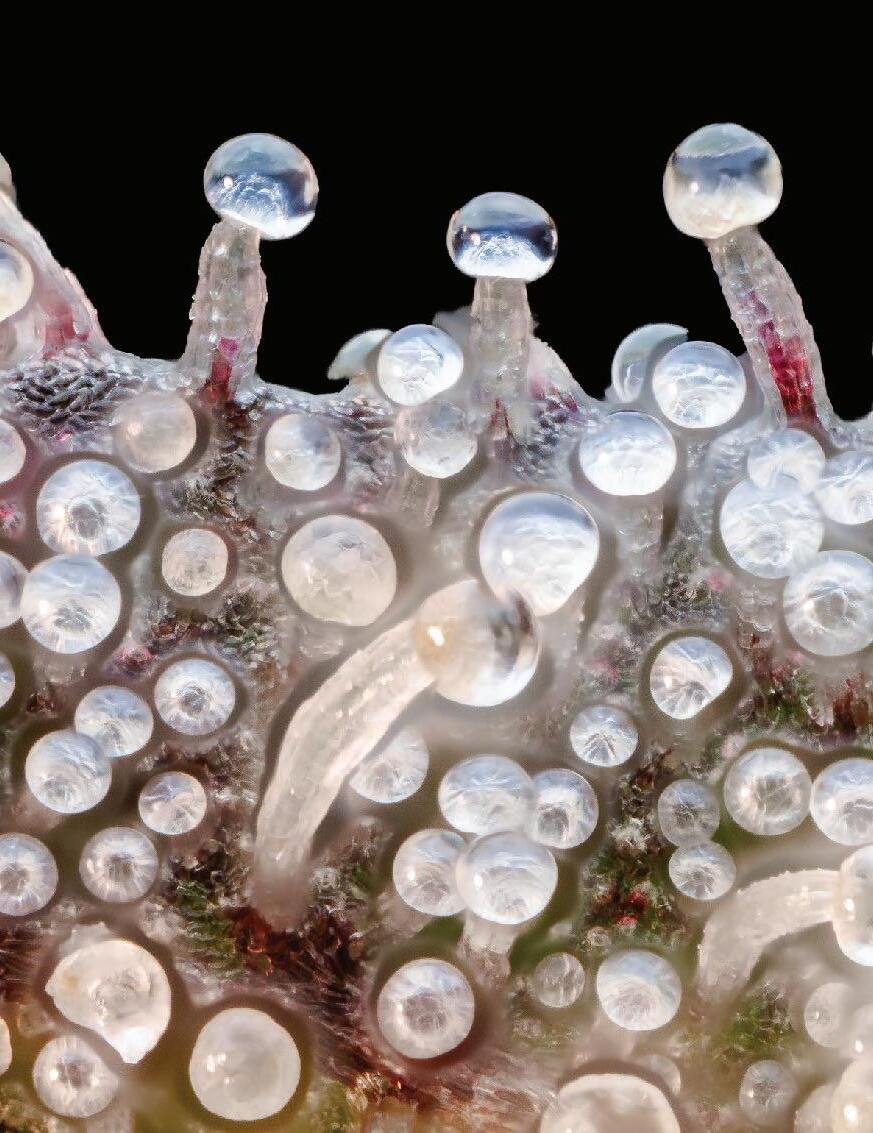
“...we were back at home, and I had returned to that reassuring but profoundly unsatisfactory state known as being in one's right mind. ”
—Aldous Huxley, The Doors of Perception



Many people experience stomach discomfort after consuming raw psilocybin mushrooms, often due to chitin and various irritants. To alleviate these digestive issues, psilocybin tea has become a very commonly favored alternative. Chitin is a tough, indigestible compound that makes up much of a mushroom’s cell walls. It can irritate the stomach lining, but the heat from hot water effectively extracts the psilocybin, making it gentler on digestion.
To break down the chitin further, lemon tekking your psilocybin before making tea can be beneficial. Lemon tekking refers to soaking psilocybin mushrooms in lemon juice before consuming in order to reduce stomach irritation. Choosing to lemon tek your psilocybin mushrooms enhances absorption and accelerates the onset of effects.
I’ve named this drink “The Trippy Butterfly” as it mixes whimsical ingredients like butterfly pea flowers with enchanting visuals, creating the perfect vibe for a great trip. It’s truly fascinating how each individual's journey can be unique, leading to adventures that differ every time. This diversity injects excitement, ensuring that every experience is special and unforgettable.
• ¼ cup dried butterfly pea flowers
• 2 cups water
• 2 glasses ice
• 0.5-1 grams dried psilocybin mushrooms (adjust per experience level)
• Juice of 2-3 large lemons (for Lemon Tekking Method)
• Sugar, simple syrup, or honey to taste
• Lime juice or lemon juice to taste
• Sparkling water for some fizz action
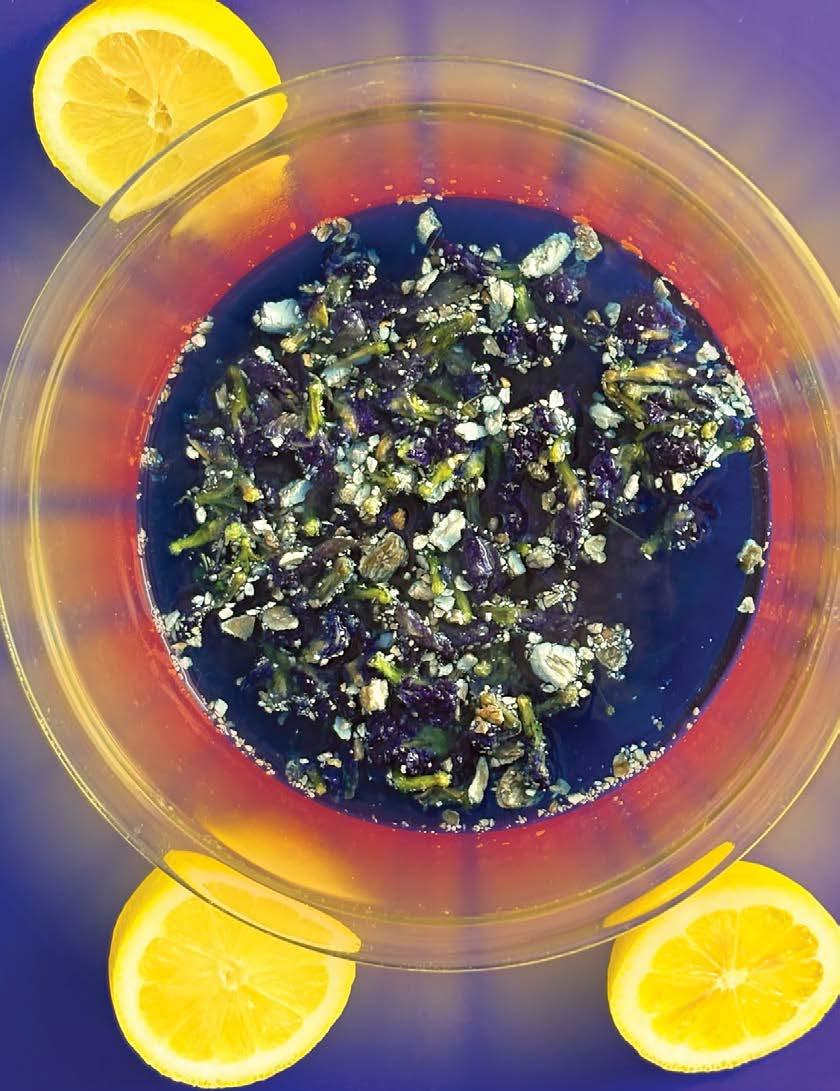
1. Chop or grind the dried mushrooms into very small pieces.
2. Mix the psilocybin with freshly squeezed lemon juice in a small bowl. Allow it to sit for 20-30 minutes.
1. Boil the water in a saucepan or tea kettle.
2. Remove from heat.
3. Add butterfly pea flowers and steep for 5 minutes.
4. Pour in lemon tek mushroom mixture and combine. This will change the color from blue to electric purple. The citric acid from the lemon decreases the pH and the anthocyanins change forms, which results in a color change.
5. Let the tea cool.
6. Strain the tea into another cup discarding the flowers and mushroom pieces.
7. Add ice and sweeten with sugar, honey, or additional citrus juice as desired.
8. Enjoy your trip.

HELPED ME BE LESS BITCHY
HELPED ME BE LESS BITCHY

By Isabella DeChard
Ever since my teenage years, I was labeled “bitchy” during moments of heightened emotions. Minor annoyances would spoil my entire day, and as I got older, drastic waves of sadness or anger started interfering with my relationships. Any typical emotional response seemed like I often felt it tenfold, and would debilitate my everyday life.
It took me a long time, well into adulthood, to learn how to sort through intense feelings, stressors, and personal waves of depression. Eventually, I discovered that what I was experiencing was related to premenstrual dysphoric disorder, (PMDD).
PMDD is a severe form of premenstrual syndrome, (PMS) wherein symptoms can be both emotional and physical. For me, it causes a range of intense mood swings, chronic pain and cramps, fatigue, feelings of helplessness, depression, and anxiety. Studies show it’s not exactly a hormone imbalance, but a neuroendocrine disorder. This essentially means that my brain has an abnormal sensitivity to the normal fluctuations of ovarian hormones during the luteal and menstrual phases.
My symptoms often occur mainly during the luteal phase, which typically falls around day 13-15 of a 28-day monthly cycle for women. If you felt glued to a tumultuous emotional rollercoaster every luteal phase like I did, you would’ve also spent sleepless nights desperately scanning Google for answers. Finally identifying this for what it was felt validating, but then it was time to understand the cause and solution.
Kicking off my general research into women’s health disorders, there is one fact that, when I first read it, felt like a total sucker punch to my gut:
It wasn’t until 1993 that women were included in ANY pharmaceutical trials.
For reference, Adobe Photoshop launched in 1990, so up until just three years later, all pharmaceutical clinical trials only included
men. This lack of information and inclusivity of women in clinical trials could arguably be due to the history of Western science’s invalidation and dismissal of psychological and physical pain experienced by women.
When I started to explore clinical research related to the symptoms I was experiencing, it became clear that most available studies primarily focused on men. The studies addressing women’s health disorders, particularly those related to PMDD and other menstrual issues, were often disappointingly vague. (Balch, 2024)
I read about a key study in 2017 that revealed ADHD symptoms in women with regular menstrual cycles worsened during low estrogen periods. From 2020 to 2022, ADHD diagnoses in women aged 23 to 49 nearly doubled. Stimulant prescriptions for women and girls rose by 14% in just one year. (Dennis, 2024) While I understand stimulants and certain pharmaceuticals can be imperative to one’s healthcare, I don’t believe in them as a band-aid solution.
With so many questions still unanswered, I began exploring natural aids that could better support my symptoms, creating a path for insight into my own wellness.
EXPLORING NATURAL REMEDIES
I tried many different herbal supplements like chasteberry, vitamin B6, dong quai, lemon balm, and licorice root. Herbal tinctures infused with cannabis and CBG have been supportive during challenging emotions, and throughout this exploration of plant medicines for mental health, I discovered that psychedelics played a crucial role in my healing.
My research hit a new level when I finished Ayelet Waldman’s book A Really Good Day: How Microdosing Made a Mega Difference in My Mood, My Marriage, and My Life. With her background as an experienced public defender, novelist, and mother, she writes about her 30-day trial with microdosing LSD: 10 micrograms every three days.
Diagnosed with bipolar II disorder and PMDD, she exhausted all options before she came across James Fadiman’s The Psychedelic Explorer’s Guide and wanted to see what feeling “better” through psychedelics meant. Her daily log

and journal excerpts of her microdosing exploration are authentic and honest. She shares her bad days as equally as the good, including interesting insights and the science behind how it’s interacting with her body.
Waldman explains that psilocybin and its prodrug, psilocin, are tryptamine alkaloids that mimic the actions of serotonin neurotransmitters. Studies are showing that psychedelics boost neuroplasticity in the brain, increasing brain-derived neurotrophic factor (BDNF) levels, which supports the development of new neurons and synapses. (Ly, 2018) What’s happening is a mix of improved cognitive functions and neurological factors that can change negative thought patterns associated with disorders like PMDD.
Another study I read was a clinical case series led by Natalie Gukasyan and Sasha Narayan. The series explored the idea that changes in menstrual health could be linked to the impact of psilocybin on the hypothalamic-pituitary-gonadal (HPG) axis, which plays a vital role in regulating hormonal and reproductive functions. (Gukasyan, 2024)
The study examined three women between 27 and 34, who all reported notable changes in their menstrual cycles after using psychedelics. Notable results included the return of menstruation after periods of amenorrhea, an unexpectedly early onset of menstruation when psychedelics were taken during the luteal phase, and improved cycle regularity in one participant diagnosed with polycystic ovarian syndrome, (PCOS).
Another clinical trial backs up this information on how classic psychedelics, (LSD and psilocybin) interact with the brain’s serotonin 5-HT₂A receptors to influence neurobiological effects of mood, perception, and cognition. This research further shows that psychedelics may enhance neuroplasticity and emotional processing. (Vollenweider, 2010)
COULD MiCRODOSiNG MAKE A DIFFERENCE FOR ME?
Inspired by Waldman’s success in Really Good Day, I opted for my own self-experimentation to see how psychedelics, specifically psilocybin, could improve my mental and menstrual health.
I experimented with The Stamets Stack, a microdosing protocol developed by famed mycologist Paul
Stamets. This powerful blend effectively supports brain health, enhances cognition, and promotes neurogenesis.
Each dose of this supplement combines a microdose of psilocybin mushrooms, which boosts brain neuroplasticity while improving mood and cognitive flexibility. The addition of lion’s mane mushroom promotes the production of nerve growth factor (NGF), supporting neuron growth and repair. (Aloe, 2015) My microdose supplements also include maca root, which offers adaptogenic support for energy and reproductive health.
It took me longer than I’d like to admit that talk therapy alone wasn’t going to pull me out of the dark trenches of PMDD. Acupuncture and SSRIs offered temporary relief, but felt like soothing band-aids. Even as a heavy toker, cannabis sometimes amplified my anxiety when I was feeling my lowest.
After a decent experimental period, I found myself feeling lighter and brighter from microdosing psychedelics, with fewer severe grey clouds from PMDD holding me down. I embraced the difference and dug even deeper, exploring ways to incorporate plant medicine and herbs into my health regimen, while connecting with reputable brands that support women’s wellness.
One standout, the brand Hello Again, creates vaginal suppositories with hemp-derived cannabinoids and botanicals that directly target menstrual symptoms like cramps, menopause, and sleepless nights. The tincture brand Yummi Karma has given me sweet relief on bad days, with mindful formulas using full-spectrum cannabinoids. Microdosing psilocybin has also become a conscious and regular part of my mental health routine.

Pairing these practices with my psilocybin Stamets Stack also meant including a steady rhythm of exercise, nourishing foods, and art therapy. Just like set and setting can influence a psychedelic trip, these factors of my mental health have all helped me as a hippie stay less bitchy.
As Waldman concluded in her microdosing memoir, “Microdosing
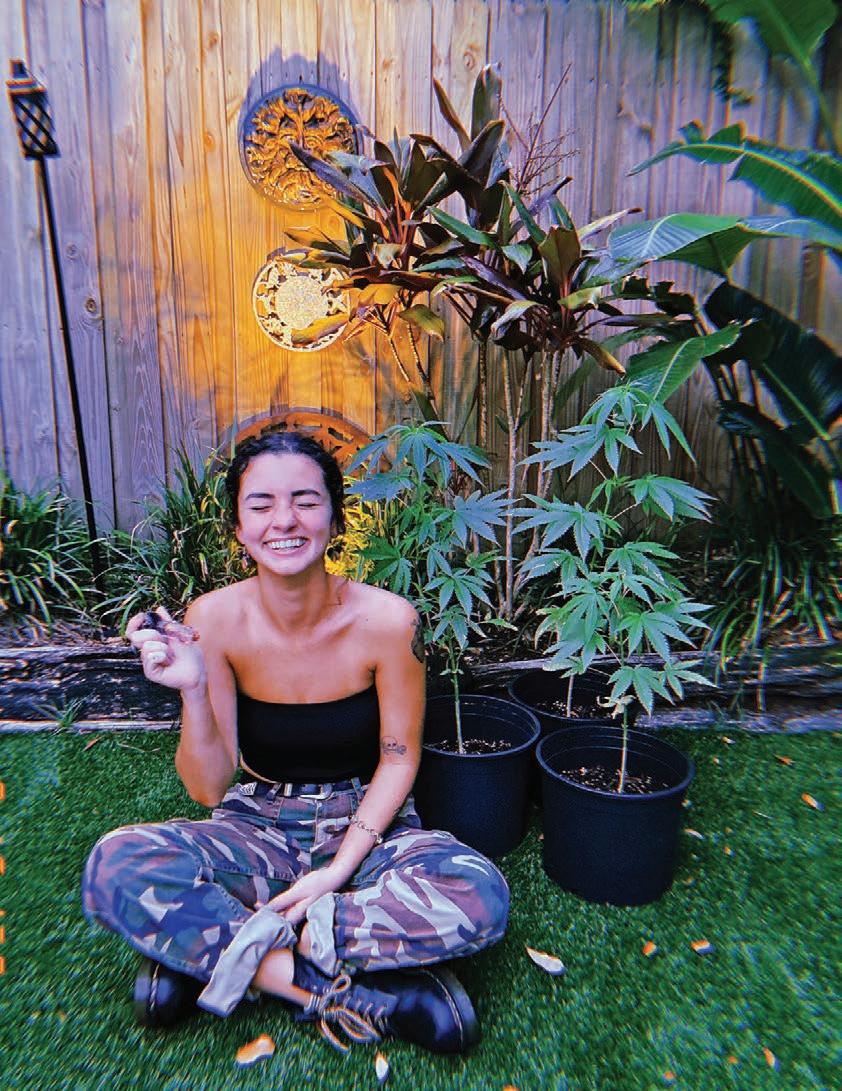
makes me both irritable and able to tolerate irritability.” I couldn’t agree more. Sure, I still have rough days and moments of frustration, but I feel more emotionally in tune, more resilient, and better able to steer the rollercoaster I’m riding.
For women, the hormonal, neurological, and emotional shifts we experience throughout our reproductive cycles mirror the nuances of psychedelic interactions. Both tap into our brainbody connection, affecting each of us uniquely based on our individual hormone and chemical makeup, and no two responses or reactions are ever the same.
This journey taught me that no one else can define what works for my body other than myself. It took time, patience, and plenty of trial and error to find my own affinity, and the work and progress around it keep flowing.
Psychedelics aren’t a one-size-fits-all, and that’s exactly the beauty of it. Holistic wellness will look different for everyone, and there will be many elements and factors to consider in its exploration. We each hold the power to decode our rhythms and advocate for what health truly means to us.
Today, I feel more grounded, more aligned, and deeply connected to the healing that plant medicine brings me.

“LSD is a psychedelic drug which occasionally causes psychotic behavior in people who have NOT taken it.”
—Timothy Leary
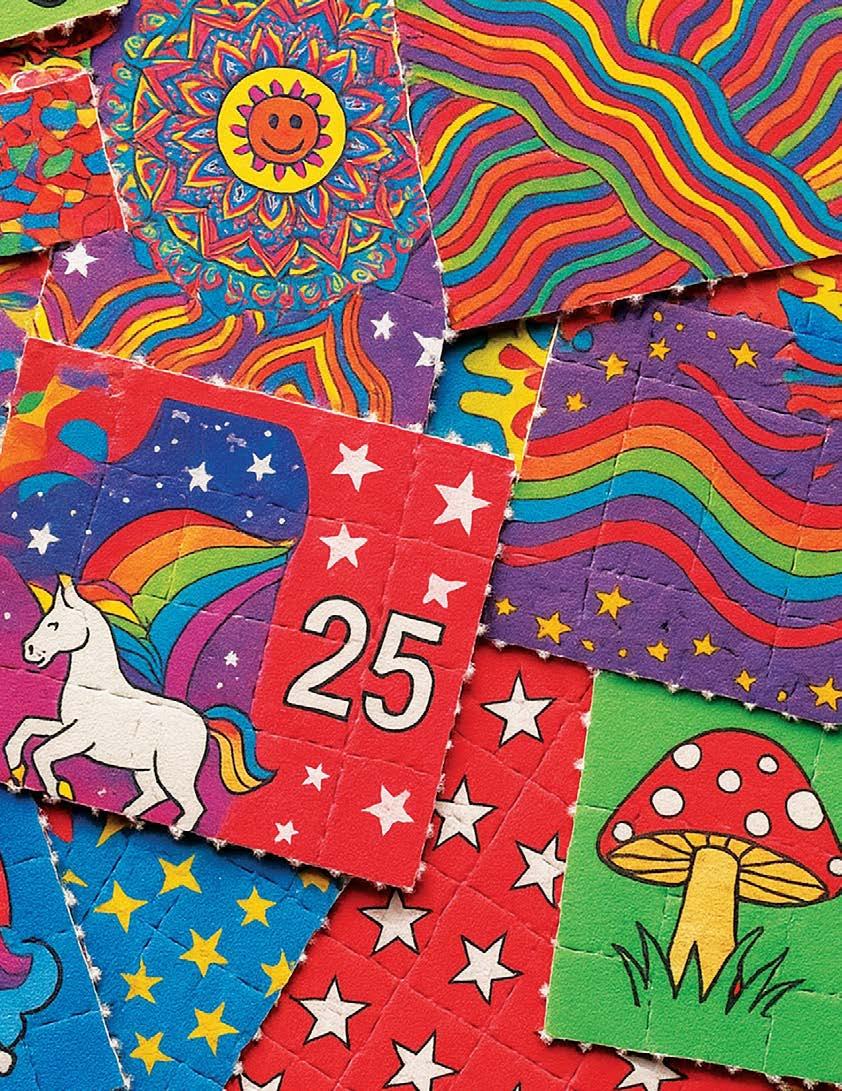


By Jessica Reilly-Chevalier


If you think learning about cannabis is confusing, wait until you dive into mushrooms. Prior to experiencing ‘shrooms’ for myself, I didn’t think there was much to it: magic mushrooms contain a compound that gets you high and existential, and then you come down.
Turns out, it’s a little more complicated than that.
Today, there’s plenty of information online for people researching cannabis, but there’s less when it comes to magic mushrooms, which can make the experience feel like learning in the dark. I sat down with Ganjier, podcast host, and psychedelic enthusiast, Rob Sanchez, to talk about misconceptions around mushroom trips and how to set yourself up for success.
If you’re like me, diving into mushrooms for the first time, you might think that all psilocybin comes from one place—but in fact, there are over 220 species of mushrooms that contain this alkaloid compound. “Magic mushrooms” is an umbrella term for mushrooms in the Psilocybin cubensis family. Some of the most well-known are Golden Teacher, Penis Envy, B+, Albino A+, Blue Meanie, Cambodian, Fatback, and Monster Mack. Once consumed, the psilocybin is converted to psilocin in your body, the active compound responsible for your trip.
While all of these varietals contain psilocybin, their intensities vary. Sanchez compared them to different strains of cannabis: some are more potent than others. The strength of magic mushrooms is determined by its ratio of tryptamines (a broad class of “serotonergic hallucinogens”) and other alkaloids, in addition to the psilocybin. The differences in the tryptamines and alkaloids levels is why some trips are super visual, while others are incredibly introspective, and some are downright confusing.
If you’re interested in dipping your toe in psychedelics, mushrooms are a great place to start. Sanchez classifies psilocybin as a “beginner psychedelic” that creates a more gentle experience compared to some other types of hallucinogens.
The type of mushroom you choose can influence your trip. As a generalization, Golden Teacher will typically deliver a more gentle, introspective high. B+ is a good varietal to try for parties and raving, because it’s gentle and visual, but less introspective. Albino A+ tends to deliver a more visually intense experience, and Penis Envy is known for its potency.
Sanchez describes mushrooms as “the shallows of the psychedelic world, where you can take a little, try it out, and sleep it off.” Part of the reason for this is because tripping on
mushrooms tends to be shorter and less intense than other psychedelics: psilocybin trips last about 4 - 6 hours, while peyote and LSD trips can last up to 12 hours, a major commitment. DMT lasts between 30 minutes and 4 hours, depending on how you consume it, but it’s far more intense.
“Mushrooms tidy the house,” Sanchez said. “They’re not going to blow down a wall or crack the foundation. They work with what’s there. If you want to renovate your house, you need stronger psychedelics. On the psychedelic Christmas tree, mushrooms are one of the base layers. They’re not lower because they’re less, but because they’re foundational. Magic mushrooms are some of the most accessible psychedelics because they give people the first glimpse of what it means to trip.”
But Sanchez stresses that just because mushrooms are accessible, doesn’t mean they’re for everyone. “It’s not like cannabis— smoke, it’ll pass, and you’ll be fine. A bad psychedelic experience can have lasting ramifications. These substances are not for everyone.”
Like cannabis, magic mushrooms have an undeserved reputation for being a “gateway drug.” But in my experience, it was just the opposite. Trying ‘shrooms didn’t make me want to race to the dark web and buy every psychedelic I could get my hands on. If anything, I went in the opposite direction, deciding firmly against several of the stronger types. If my intense psilocybin trip was any indicator, ayahuasca and DMT were not for me.
One of the trickiest parts about mushrooms is how different each experience can be, which Sanchez attributes to the massive importance of set and setting.
“Even if your setting is the same from trip to trip, your experience won’t be, because your mindset varies.”
Set and setting are sometimes referenced in cannabis, but they are the holy grails of psychedelic experiences, referring to your mindset and your physical setting for a trip.
One of the best things you can do to prepare yourself for a mushroom trip—or

any psychedelic experience—is to meditate. Being practiced at accepting what is moment by moment with an unshakable focus on the breath is an incredible skill to have in the midst of a confusing or intense experience.
Sanchez and I discussed our instances of psychedelic-like experiences with breathwork. Breath retention techniques like Wim Hof and breathing methods like Kalabati can induce a “non-ordinary state of consciousness” and give you a preview of what a psychedelic trip might feel like. Some of the most trippy experiences of my life were in the midst of a Wim Hof meditation at minute 1:58 of breath retention.
The best advice Sanchez has is advice anyone who has tried psychedelics has heard before. “Don’t resist the experience. Whatever you determine the trip to be, it will be.”
That’s why breathing is so important—it helps you remain in calm control.
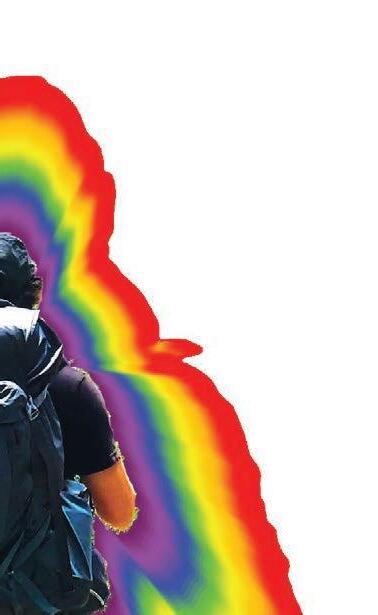
5. Play the right playlist. Music makes a big impact on your trip, so set up your queue accordingly. Sanchez likes the kinds of music he usually listens to, while I’ll lean more for playlists geared for trips, like Jon Hopkins’ Music for Psychedelic Therapy, or This is Ram Das on Spotify.
6. Dim the lights. Bright lights and magic mushroom trips don’t play well together. Low lighting and fun decorative lights, like twinkle lights or lava lamps, help keep the vibe right.
7. Have a friend. Whether or not you recruit a sober trip-sitter is up to you (I recommend it), but you shouldn’t take mushrooms entirely alone. At the very least, inform a trusted friend or loved one of when and where you’ll be taking mushrooms. They can check on you after the fact, or talk you down if things get weird.
Sanchez emphasizes how important it is to plan for your trip in advance because in the midst of the experience, it can be hard to advocate for or vocalize what you need. Before you start tripping, take some time to set up your space well.
1. Start with a small dose. 0.5 grams or less is a microdose, while a recreational dose is between 1 - 2 grams. Both of these are good places to start. A hero’s dose is 5 grams and above, but those doses should be approached with caution and planning.
2. Eat beforehand. Mushrooms mess with your stomach, and many people find they lack an appetite during the trip. Eating beforehand will ensure the trip doesn’t wreak havoc with your blood sugar.
3. Have water nearby. Hydration is everything, and the last thing you want to be while tripping is dehydrated.
4. Get comfy. Many people, myself included, find mushrooms to be incredibly sedating. If you’re heading on your first trip, have a comfortable chair nearby in case you suddenly need to drop into it. A blanket can be helpful if you get cold or need to cover your eyes and ears to reduce outside stimulation. Eye masks and noise-canceling headphones can also be useful.
Jessica’s best trip: One sunny Saturday in July, I hiked 7 miles into the Pennsylvania backwoods with my husband. We set up camp a few dozen yards away from a waterfall. After splitting a Penis Envy chocolate, we lay in the tent on mattress pads for hours, watching the wind blow through the tree tops and create different shapes, and listening to the steady crashing of the waterfalls. New level of relaxation: unlocked.

Rob’s best trip: One winter night in Minnesota wasn’t dark or cold at all. Snow had been falling all evening, so mid-trip we decided to go outside and play like kids. Getting bundled took forever, we kept cracking up, and I remembered how my mom would pin my gloves to my coat as a kid. Finally outside, we were awe-struck; every huge spinning snowflake glittered in its own color. We made snow angels and a little snowman before sitting waist-deep, watching the waves of color and twisting visuals ripple across the snow-covered city. One of those things where we couldn’t even speak it was too good. You just had to feel it and smile.


“In the mind there are no limits.” —John C. Lilly


WE ARE THE MEDICINE
By Guy Borgford
the medicine was coming up fast. Without warning, a heavy boot came down on my chest, compressing my rib cage and impeding my ability to breathe. This discomfort, a familiar turn. Out of nowhere, the stamp of fear's imposition. Never courteous, or asking if we're busy, fear barges in unannounced, sending the mind whirling, and our reptilian brain looking for a way out the back door.
"What is this about?" I asked the medicine.
Mother Ayahuasca's soft voice popped into awareness. "You asked me to show you how ‘you are the medicine’. Do you feel that? I know you do because I hear you. You're afraid that you're losing your ability to breathe."
The darkness. The fear. Layers of it, peeling away each time we tap into courage.
"You're resisting. When you resist, fear has you by the throat. Remember who you are. Breathe into that feeling that you can't breathe."
The paradox again. Cast in darkness, faces, places, swirling, flashing, confusion, it's all coming at me… and then I breathe into that feeling that I can't breathe.
My chest loosens, the burden of fear's heavy boot lightens, then steps away. The breath returns, metered and soothing, grounding me into the medicine, my journey continuing its unfolding into layers of subconscious treasure.
Ayahuasca smiles through her loving, energetic embrace, a smile crossing a million valleys, a cosmic chasm in time, transmuting the writhing fear of us versus them, keeping our world locked in turmoil and rage.
The following morning, I’m pondering this insight over a large, bland bowl of oatmeal and chopped banana. I momentarily long for a drizzle of maple syrup or some
seasoned, creamy, rich farm-fresh eggs to accompany my oats. But the sama, a special plant medicine diet I'm working through, forbids such decadence. I'm deep in it now, and as my curandero friend likes to say, the deeper you go, the weirder it gets. Weird and so unapologetically beautiful.
I've always loved psychedelics, ever since high school, when I learned how to harvest the delicate liberty cap (Psilocybe semilanceata) from the abundance of cow pie. Aside from mushrooms, I also enjoyed LSD and MDMA on more than a few occasions and, of course, was always a huge fan of our beloved Ganja, which, as I’m sure most of you know, can be very psychedelic with the right dose.
In my youth, psychedelics were used to both escape and try and fit in. A tad offbeat, a poet, and lover of school, I was any bully's easy target. My father's tragic death when I was 12 was the trigger for me to don the mask of the stoner and fade into low-profile mode, where fear kept hidden beneath a downy blanket of disguise and denial.
Fast forward almost 40 years, and I'm living pretty fast. It was my mother's birthday, who was murdered about 30 years prior. My sister, Georgia, got an invitation to attend a transformational breathwork ceremony, something she had never tried before. Feeling melancholy about Mom, she went.
Diving into this non-ordinary state of consciousness, Georgia was overcome with our mother's energy filling the room, manifesting as the Divine Mother. On a call the next day, she tearfully recounted how this energy filled her being with indescribable, radiant Love.
Among the things communicated during that experience that night was, "Your brother needs to wake up. He needs to wake up NOW!"
After that fateful call, I took the hint and promptly started a meditation practice. Three months in, I experienced a transformational shift in awareness commonly known as

a kundalini awakening. It was messy as hell, and the beginning of what has been the most profound and challenging chapter in my human experience.
Ayahuasca came knocking shortly after my initial shift. One ceremony in, I stopped using cocaine and smoking cigarettes. Subsequent ceremonies directed me deeper into medicine work, and I began working with mushrooms and DMT, and learning all I could about that which cannot be explained.
From experiencing the gut-wrenching grief of my father's death after 40 years of numbing, to epigenetic traumatic processing, curing asthma, and releasing a collection of addictions and attachments, the past few years have lightened my burden and addressed shame, shining awareness and understanding on my life's biggest challenges—and perhaps many lifetimes of blindness.
Taking the medicine is easy. Facing our fears and doing the work in the 3D is where things can get extraordinarily challenging. Without intention and integration, we’re just doing drugs, (and there’s nothing wrong with that). However, if we want to tap into that which is much greater than our wee, little egoic selves, if we want to make meaningful, positive change in our lives, or find meaning, for that matter, we need to put in the work.
“Doing the work” means stepping up in the day-to-day, reaching higher in the slog, finding the lessons in the challenges and setbacks, and practicing choosing love over fear and love over indifference in the present moment—and expressing gratitude for it all, every single day.
If it all sounds a bit like too much work for you, you’re focusing on the destination, not the journey. One step at a time, grasshopper.
When you wake up in the morning, think about all the things you’re grateful for in your life. Love, family, friends, pets, work, abundance—and don’t leave out life’s challenges, too. Think about the things that might kind of suck, but put the thought out there that you’re grateful for the lessons. Even if you don’t know what those lessons are yet. They are there if we get out of the way and allow them to reveal themselves.
Now that you’ve got all that in your head, pull that gratitude into your heart and feel it. Really FEEL it. Putting out the feels, broadcasts your love and gratitude to the quantum. We are quantum, multidimensional beings of pure energy. Physics, the ancient Eastern mystics in nondual traditions, and wisdom transmitted through non-ordinary states of consciousness attained through entheogens and other practices all illuminate that truth.
From experiencing the gut-wrenching grief of my father's death after 40 years of numbing, to epigenetic traumatic processing, curing asthma, and releasing a collection of addictions and attachments, the past few years have lightened my burden and addressed shame, shining awareness and understanding on my life's biggest challenges—and perhaps many lifetimes of blindness.
There are two daily practices that take less than a minute combined and will make a considerable positive change in your life. These are little magic tricks, courtesy of the medicine that you are.
To which frequency do you want to tune your human experience? You have no control, but you’re driving the ship. The paradox, again.
Now that we have your morning practice covered, it’s time for the evening one. And this one takes even less time, but for many of us, it’s anything but easy.
While you're getting ready for bed at night—I like to do this when I’m brushing my teeth—look yourself deep in the eyes in the mirror and reflect on your day. Reflect on all the times you were kind, understanding, and compassionate. And also think about the moments where you could have executed with a tad more grace, and in those cases, feel compassion for yourself that you’re just learning, like everyone else, and life is a practice.
Now, as you’re reflecting on your day, toothbrush going crazy, looking yourself deep in the eyes, look at that human staring back at you and say it, with a mouthful of toothpaste, if that’s the case: “I love you!”
This may sound weird—I get it. However, self-love is a very common theme in medicine work, and this daily practice opens your heart, spooning on heaps of compassion for yourself, at the times in life when you might need it most. Life is a practice. There’s no game time. That’s all made up. We are eternal and infinite works in progress. Some of us don’t progress much in this lifetime, but who’s to say there’s anyone keeping track? And progress to what, exactly?
Remember, it’s a practice.
We are the medicine. Entheogens are just tools that enable us to mine that Divine Truth. Playing this game of amnesia in these human dramas, we're challenged with the egoic spectre of shadows lurking in our subconscious. There, in the depths, a
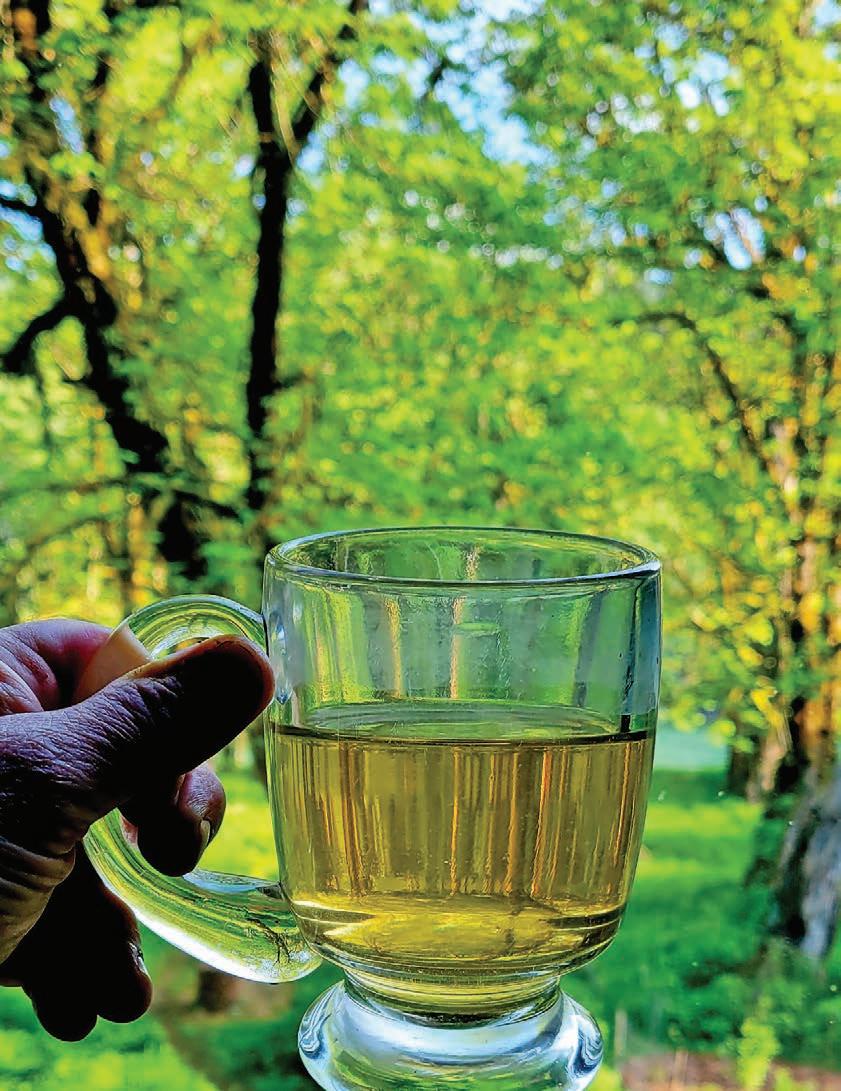
simmering stew of lived experiences, unresolved trauma, and epigenetic ghosts, manifesting in the way we move about in the world, or in some cases, not moving at all, and freezing, locked in fear of what may be lurking around the corner.
As you go about your practice in your little human suit, try and remember this Truth:
We are the Universe, experiencing itself through our very limited human sensory apparatus. We are the Everything and Nothing all at once. We are the medicine and so much more.
CANNABIS CAN LEAD TO A BUFO ALVARIUS REACTIVATION
By Adam Miezio
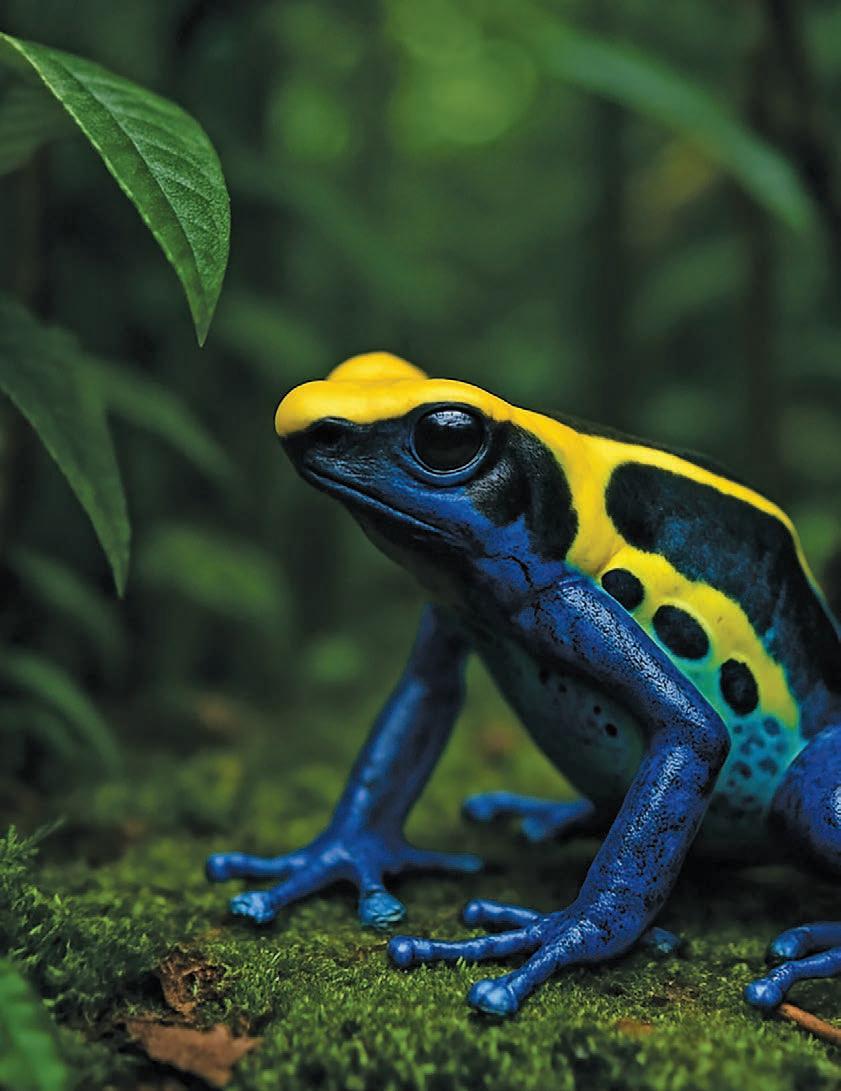

The Sonoran Desert toad’s (Bufo alvarius) legend and lore has reached stratospheric levels. The toad’s venom contains 5-MeO-DMT, one of the world’s most potent psychedelics. People “smoke the toad” for its psycho-spiritual and physiological benefits, despite it being one of the least studied and understood psychedelics. Many people don’t know bufo reactivations can happen, and cannabis can provoke an unexpected reactivation.
Toad reactivations are a slippery and nebulous phenomenon, best considered on a case-bycase basis. One of the few available studies shows bufo reactivations occur more often after vaporization compared to intramuscular injection. (Uthaug, 2020) Regardless of administration method or reactivation pathway, another bufo reactivation study states reactivations, “...often represent a neutral or positive byproduct of the acute 5-MeO-DMT experience.” (Ortiz Bernal, 2022)
Some people may incur a reactivation that replicates their initial, toad-smoking experience. Other people may experience a dialed-down or diluted reactivation. A reactivation like this may be less visual and hallucinogenic, more subtle and psychosomatic, akin to a body high, and/or involve a brief state of spiritual acuity and awareness.
Psychedelic effects vary on an individual basis and are by no means one-size-fitsall. Some people may never experience a bufo reactivation, while others do. A toad reactivation can occur days, weeks, or maybe even months after “smoking the toad.”
Various spiritual practices (meditation, breathwork, etc.) and psychedelic substances can lead to a bufo reactivation. However, due to the volume of cannabis consumers in the United States, cannabis may be the likeliest reactivation pathway.
For clarity, there is no scientific proof that cannabis has the highest chance of causing a reactivation, or if cannabis can cause a reactivation for everyone. Meditation may also cause a reactivation, so bufo smokers in a Buddhist culture may appear more prone to reactivations than cannabis consumers.
Emeline Crutcher lives in the Santa Cruz area. Besides holding a PhD in genetics, Crutcher hosts retreats through Tree of Life Temple, serves medicine, and does somatic therapy. She is no stranger to toad reactivations. She serves bufo and has done it many times.
She stresses that someone can smoke the toad once and experience a spontaneous reactivation. However, cannabis hits a little bit differently. “If I smoke cannabis and I have smoked bufo, especially within the last 24 hours, I will 100% get a reactivation.”
Crutcher recalled a potent reactivation experience. She did bufo in the morning. That evening, after she smoked cannabis, she had the strongest bufo reactivation ever. “It lasted for probably two hours, and it was seriously the most difficult time I've ever had holding space for myself,” she said. “Yeah, it was nuts.”
“I would say the space that you enter is very similar, but you can still get up and move, and walk.” Crutcher continued. “But you have fewer choices in your action when you're fully in bufo, if you just smoked bufo. It's more like you're being directed. Whereas when it's being reactivated by cannabis, it's like you do have a little bit more agency. It's more grounded. The frequency of it, the space is the same, but for me, cannabis really pulls me into my body.”
Crutcher doesn’t have reactivation visuals. “It's very much opening up to having a lot of information flowing through and being able to feel that in your body.” She stresses the uniqueness of toad activations for everyone. From her experience, they tend not to be visual but more energetic.

Crutcher warns cannabis consumers to be careful with their intake before and after smoking the toad. However, she notes, “A lot of people who smoke cannabis regularly don't actually get the reactivation.”
Bufo Reactivation
Probability & Window
One of the best people to speak with about reactivations is Joel Brierre. Brierre is the founder of Tandava Retreats and co-founder of F.I.V.E. (5-MeO-DMT Information and Vital Education). As F.I.V.E.'s co-founder, he’s leading the charge into further 5-MeO-DMT research.
Brierre guesses that 15-20% of people will have a post-toad reactivation. Brierre notes that reactivation pathways vary. For example, “taking 5-HTP or melatonin at night, before you go to bed,” may cause a reactivation. He does believe cannabis may cause a reactivation as well.
Brierre agrees with Crutcher on the reactivation window. He says most reactivations will usually happen “within the first few days of the experience.” But there’s a critical time that extends into the following weeks. “I think there's this four to six week period… where 5-MeO seems to reopen that critical window, period, where we're able to shift developmental stage patterning.”
Using cannabis in the 4-6 week window after bufo may have the highest chance of causing a reactivation.
However, in rare cases, a reactivation can happen outside the integration window. Brierre comments on a heart surgeon who said he had a reactivation for years after toad experience. The man had no reactivations, then, “... he had a blown, full release 5-MeO experience. He said it was the most beautiful thing he'd ever seen. It was like being right back there.”
Cannabis heightens relaxed, introspective states that may be conducive to a reactivation, but don’t worry— cannabis consumers aren’t having alarming numbers of reactivations. Kerby said, “Not a lot of folks are having spontaneous reactivations from cannabis. It does happen. But I'm not hearing a lot of reports, and I do a lot of work in Colorado, where obviously folks have a lot of access to it.”
When do people report having said reactivations? The critical 4-6 week window after bufo, as Brierre said. This is the period of neuroplasticity and sensitization. The brain finds itself in a malleable state while creating new connections.
“I think when cannabis is introduced during this phase of increased plasticity, it may act as a catalyst, essentially reopening or triggering these pathways laid down during the 5-MeO-DMT experience, making reactivations more accessible,” says Kerby. “But to me, it absolutely makes sense because I would smoke cannabis afterwards. I'd give it a few weeks, but I'd smoke a little cannabis and I could find that space almost immediately.”
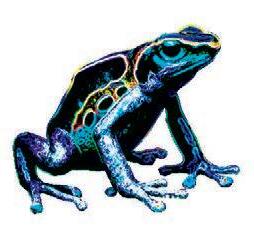
Another leading voice regarding reactivations is Stephan Kerby. Kerby is a 5-MeO-DMT facilitator and founder of the Mindscape Psychedelic Institute. Like Brierre, Kerby thinks around 15-20% of the people he works with report having a reactivation. They usually occur when “you're in a very relaxed state, either a meditative state, potentially with breath work,” or, perhaps, using cannabis. He estimates around 25-30% of people experience a reactivation with cannabis, a higher percentage than the general DMTconsuming population.
Don’t let a possible reactivation cause anxiety. “It's not something to fear,” says Crutcher. “It is not something that typically happens to people while they're driving down the road or operating heavy machinery or doing something where it's going to really cause problems. Usually it happens in situations where it might be an inconvenience for you, but you will have the time and the space to go through that process.”
Crutcher advises to “surrender” or let go. Like most psychedelics, if a person fights or resists a reactivation, they will prolong and worsen the experience. If people get caught off guard and fear what’s happening, that throws gasoline on the fire. Just get comfortable and let the phenomenon pass through you.
I witnessed a friend have a 10-minute reactivation after hitting a vape pen. He had to lie down, close his eyes, and let it pass. If you happen to incur a potent reactivation, it may suck if you’re not at home. So if you’ve done 5-MeODMT in recent times, beware the toad reload.
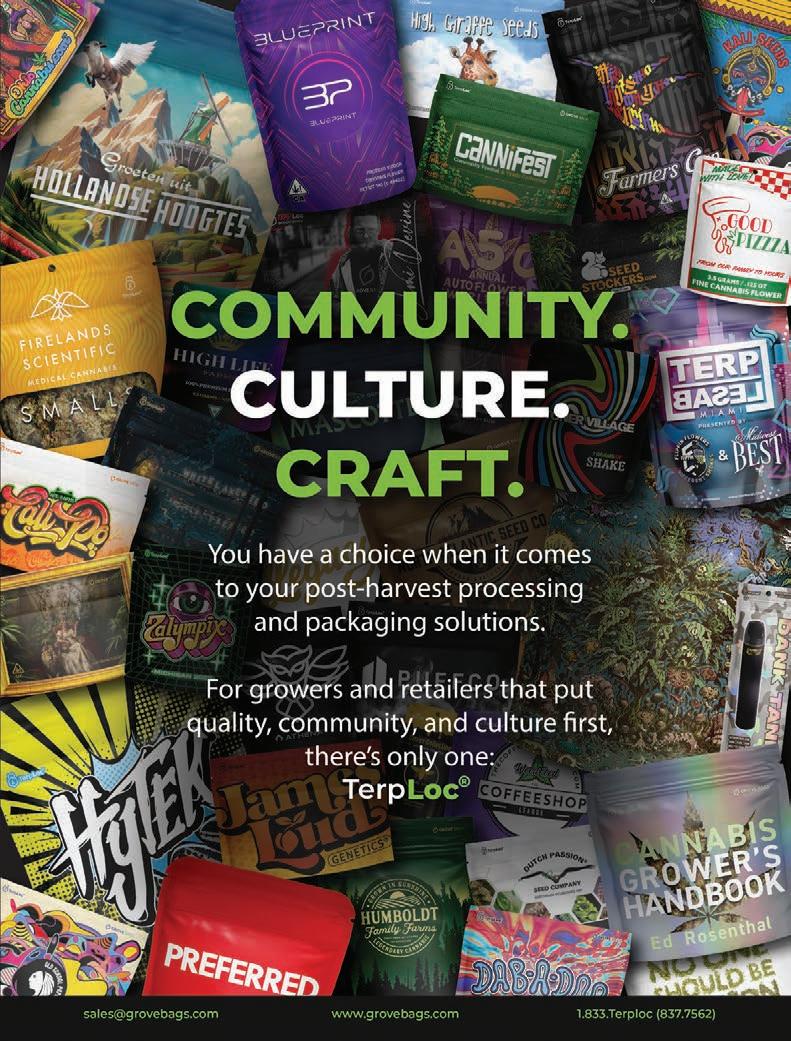

By Bethany Niebauer
Drugs can be classified in many different ways, including by chemical structure, mechanism of action, pharmacological effect, or therapeutic use. It’s very possible for a given drug to fall into multiple categories simultaneously.
In the United States, the Controlled Substances Act classifies drugs based on their accepted uses and their potential for abuse. These legal classifications were made by politicians and elected officials, with little to no input from doctors, scientists, or pharmacists. A lot of Americans perceive scientific drug classifications as rigid, precise structures with no wiggle room. That simply isn’t the case. Scientists are human, and a lot of them are just as messy as the rest of us.
Consider Benadryl. This is a common, over-the-counter medication that’s often used to treat allergic reactions. Benadryl is an antihistamine, but it can also be used as a sleep aid, which makes it a sedative. At high doses, it can even cause hallucinations or confusion, making it a mild deliriant. Benadryl fits into more than one classification system at once.
The British Medical Journal defines psychedelics as “substances that alter perception, mood, and a range of cognitive processes, often producing profound experiences of altered consciousness.” Classic psychedelics often cause psychological, visual, or auditory changes along with a substantially altered state of consciousness. “Ego-death,” or the complete loss of subjective self-identity, along with hallucinations (either visual or auditory) are common components of psychedelics.
MDMA, or 3,4-Methylenedioxymethamphetamine, is not a psychedelic, though it is commonly grouped with them. The “MA” in MDMA stands for methamphetamine because this drug is a stimulant that energizes users, making them want to dance, move, or connect with other humans.
It can cause mild hallucinations, but nothing on the scale of psilocybin or LSD. It doesn’t cause ego-death or a substantially altered state of consciousness. Nevertheless, multiple credible sources list MDMA as a psychedelic, including both the DEA and the National Institute on Drug Abuse (NIDA).
Despite the porosity of our drug classification system, Americans would be better off if we listed MDMA as an amphetamine, rather than a psychedelic. Psychedelics have a reputation as intense drugs with a low potential for any long-term harm, which is why MDMA tends to be placed there. These drugs can be used by curious, funseeking people who seek to expand their consciousness, usually while communing with nature.
Amphetamines, on the other hand, don’t enjoy a reputation for harmlessness. These drugs are more often enjoyed by members of lower socio-economic groups in rural or economically-depressed areas. Methamphetamine usage is often associated with stronger patterns of dependence and criminal justice involvement. To be blunt, we call MDMA a psychedelic because pretty, white girls like it. What would it mean for Becky if she found out that she liked the same kind of drugs as poor people?
The drugs themselves are not the problem; it’s our perception that gums up the works. Psychedelics are often used by affluent people seeking healing, however they understand that. Amphetamines and methamphetamine can be used to treat ADHD or binge-eating disorder, which means that their medical potential is just as valid.
Ultimately, drug classifications should reflect pharmacology, not prejudice or cultural bias. Calling MDMA a psychedelic instead of an amphetamine doesn’t change what it does in the brain. When we rely on socially convenient labels instead of scientific accuracy, we create stigma, obscure risks, and make it harder for patients, clinicians, and policymakers to make informed decisions. If we want a more honest conversation about drugs, we have to start by acknowledging that our categories are imperfect, and sometimes, they’re designed to protect the illusions of the elite.
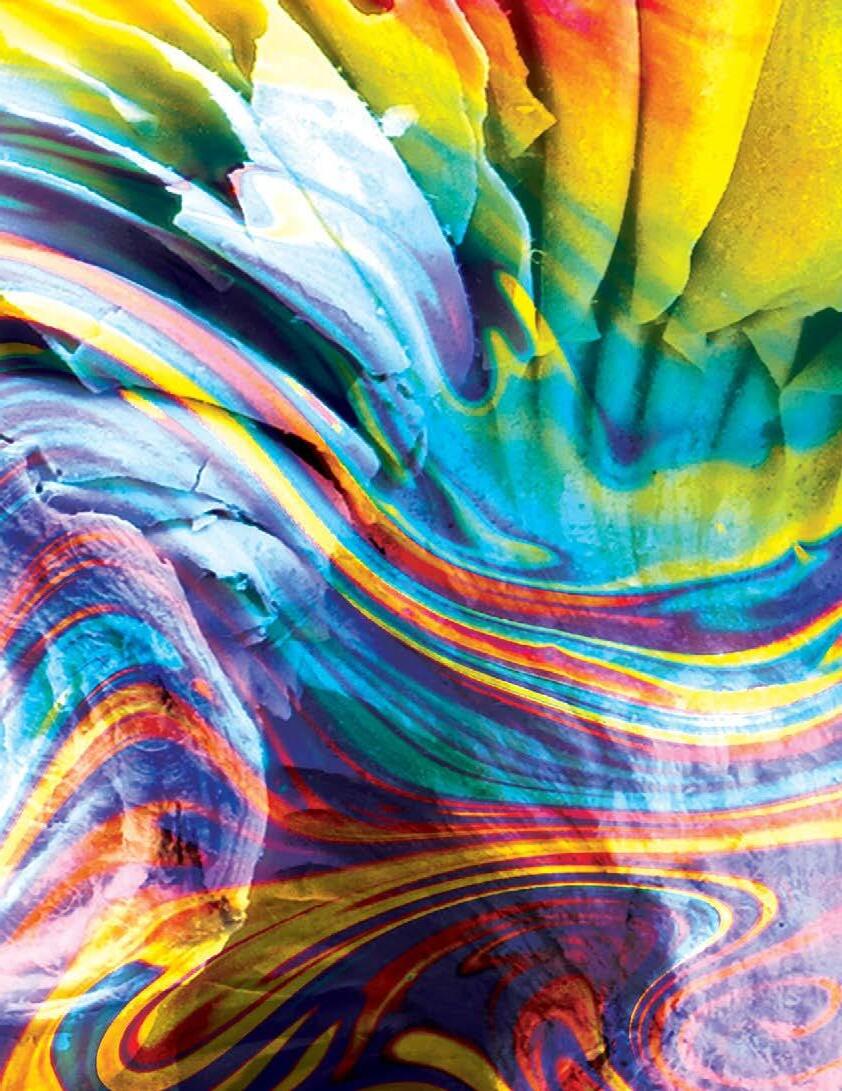
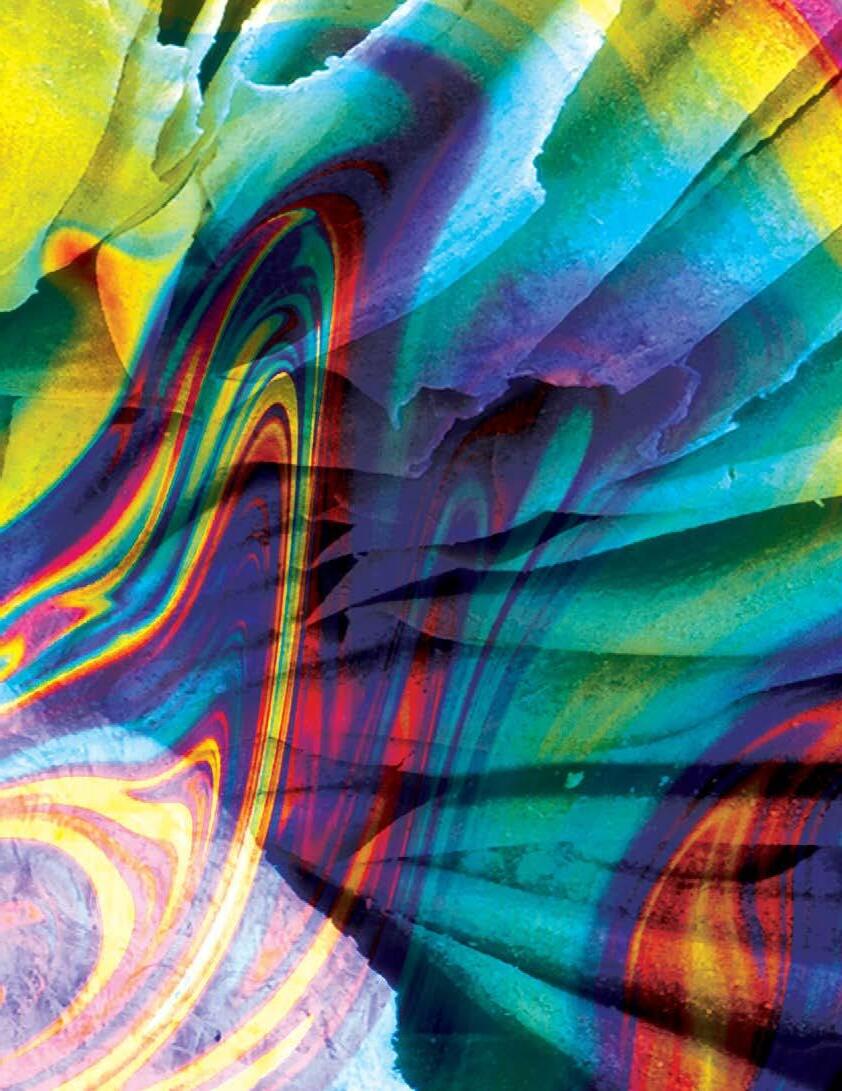
TYPE: Bluey Vitton is a rare and exotic psilocybin mushroom strain known for its vibrant, luxuryinspired name and equally luxurious effects. Thought to be a modern hybrid, a child of the Penis Envy bloodline, born somewhere in the underground labs and grow rooms of the Pacific Northwest, where breeders aren’t just cultivating spores, they’re conjuring magic.
APPEARANCE: Bluey Vitton typically features thick, dense stems with bruises of deep blue and caps that range from golden caramel to shimmering bronze, sometimes with a subtle wavy or rippled edge.
ORIGIN: While still somewhat underground, it’s believed to have originated from a skilled cultivator in the Pacific Northwest blending high-potency genetics with aesthetic appeal. You can often find Bluey Vitton grown indoors by boutique mycologists or in carefully controlled environments, as its genetics demand attention and precision.
EFFECTS: The effects are deep and introspective with euphoric waves that melt into warm visuals, emotional clarity, and an expanded sense of consciousness.
MEDICAL USES: Bluey Vitton is being explored for its potential to treat depression, PTSD, and anxiety, offering not just symptom relief but deeprooted perspective shifts. It’s not just a trip, it’s a designer psychedelic experience for the soul.
Bluey Vitton isn’t just a mushroom, it’s an experience that walks the tightrope between luxury and raw human emotion. The first time you come across it, you won’t know whether you’re holding a designer artifact or something ancient pulled from the edge of a dream. What sets Bluey apart isn’t just the potency (which is heavy-hitting, by the way), it’s the way it wraps you up: first in euphoria, then in layered visuals that feel hand-painted by your subconscious. But beneath all that sparkle, there’s medicine. Real medicine. In full ceremonial doses, it’s a mirror showing you the stuff you’ve buried, but gently, with enough beauty to make the healing feel divine. This isn’t recreational, it’s reclamation. It’s proof that the underground still births revolution, and sometimes, it comes in the form of a little bruised blue cap that changes everything.



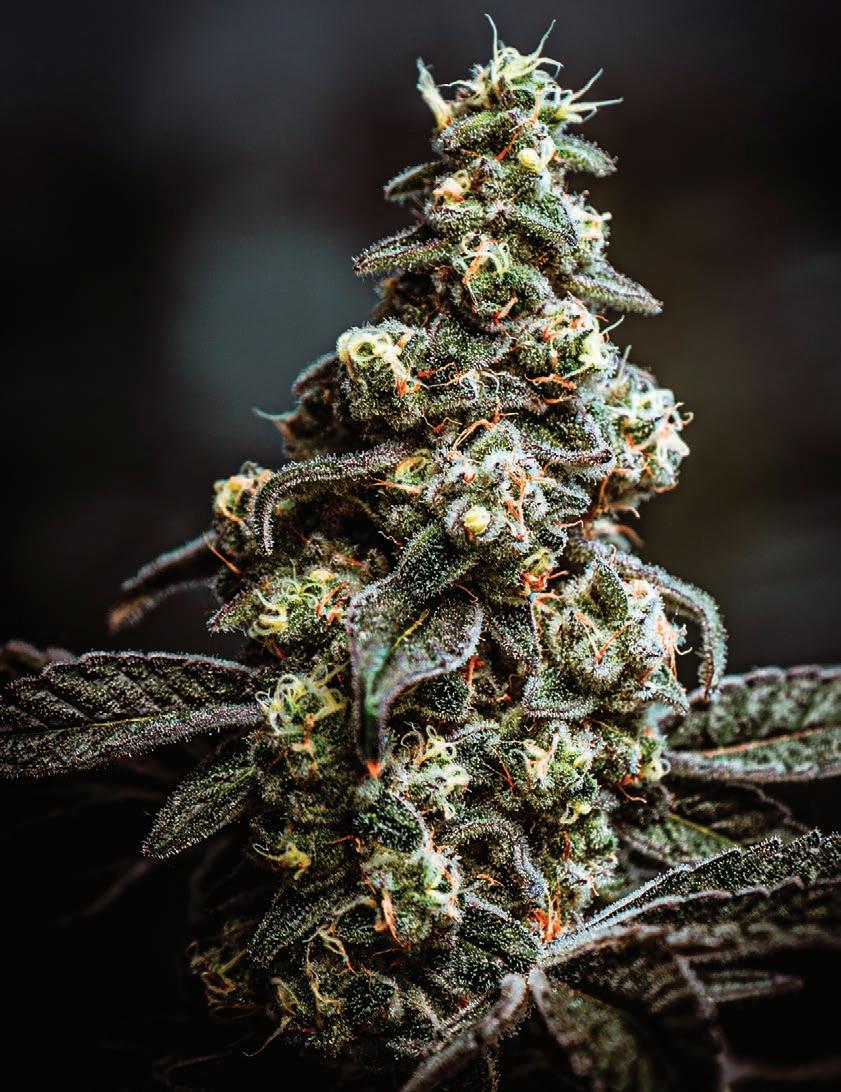

iwould love to write about psychedelics. They aren’t new to me. In high school and the few years beyond, I “experimented” with LSD probably a couple of dozen times. The first time was one of the most amazing and surreal experiences that I have ever had. It lasted for about 18 hours and will forever live like a William S. Burroughs film inside of my head. Each subsequent experience was increasingly less enjoyable, to the point where I eventually decided that it wasn’t for me.
Several years ago, as mushrooms were starting to gain some notoriety for their therapeutic effects, I decided to try my hand at growing them. I loved it. A new intellectual rabbit hole! After a failed attempt, I dug into the science and eventually was successful at growing several strains of Psilocybe cubensis
But if you’ve ever grown mushrooms, you know that it doesn’t take long before you’ve got a lot of mushrooms! The market was already saturated, and I just wasn’t going to eat them all. I haven’t yet been interested in a “hero dose,” and I never got in the habit of microdosing. I just like the occasional “museum dose,” as a good friend described it to me.
So I decided to just stay focused on the cannabis plant. And by that point, I had already been in love for a while with a different set of fungi, mycorrhizae.
Mycorrhizae are the pinnacle of a class of fungi and bacteria that, in cultivation, we generally refer to as beneficial microbes. These are ubiquitous: I have read that as many as 85% of all plant species form a symbiotic relationship with one mycorrhizal fungus or another.
Mycorrhizae are unable to absorb carbon from the soil, an element that is necessary for their development and survival. So they must find another way to get it.
Through the process of photosynthesis, plants produce simple sugars all day. Those sugars move on to become the building blocks of countless other compounds throughout the plant. Some of those sugars become exudates, sugars and proteins exuded by root systems. The mycelium of the fungus, the vegetative part, penetrates the root cells of the host plant, and from there, a partnership forms.
The plant provides much-needed carbon to the mycorrhiza, and in exchange, the fungus will offer the plant water and certain nutrients that it needs from far beyond the reach of the plant’s root system alone. The area around a plant’s roots that is affected by those exudates is known as the rhizosphere. By forming a relationship with mycorrhizal fungus, the rhizosphere is greatly
expanded and the mycelium is able to expand more effectively to every part of the surrounding substrate, and well beyond the reach of a plant’s roots.
As that fungal network expands and makes contact with other plants or the existing network of other host plants, it can expand to cover vast distances. It creates a form of communication and exchange between the fungus and the host plant, and between host plants themselves, creating a healthier crop overall.
It really is an amazing relationship.
There are two main types of mycorrhizae. They are ectomycorrhizae and endomycorrhizae. The prefix merely describes the degree to which the fungus hyphae penetrate the plant’s roots.
• Ectos only penetrate roots minimally and form relationships with evergreen trees, along with a few deciduous trees and shrubs.
• Endos penetrate the root more deeply and form relationships with the vast majority of annuals, including cannabis. There are several species of endos that have been identified to interact with cannabis. And probably more to still be discovered.
Just remember, “Endos for the ‘endo!’”
If you’re using mycorrhizal fungi in your cannabis garden, it’s not necessary to use it regularly. I use it once or twice early in the plant’s life and possibly once more when I transplant. Once the roots have been inoculated, it's not necessary to reestablish the fungus unless something has occurred that would kill it. And by that point, you’ve already got bigger problems with the plants.
Trichoderma is another fungus that is ubiquitous in soil and in the world around us. In fact, it was
so present in my home that when I did attempt to grow mushrooms, a decent percentage of my bins became contaminated with trichoderma— because one thing trichoderma will do is eat other fungi!
Trichoderma lives near the top of the food chain in the rhizosphere, consuming other fungi and bacteria. It is particularly effective at controlling root-born pathogens, both fungal and bacterial. It is an important part of the crazy universe of life in the rhizosphere, usually referred to as the biome.
In fact, when using beneficial microbes, whether they be fungal or bacterial, the idea is to overwhelm the substrate with enough beneficial microbes and maintain the proper conditions, so that the harmful microbes never get the opportunity to establish and infect the plant.
At the bottom of the food chain in the rhizosphere are a whole host of different bacteria.
Beneficial bacteria provide countless benefits for both the plant and soil health. Primarily, bacteria will consume and break down organic matter in the substrate, making the nutrients in that matter more available to the plant. When they die or are consumed by something higher on the food chain, those nutrients also become available. This is referred to as nutrient cycling.
Fun fact: the air we breathe is about 80% nitrogen. Some bacteria are actually able to capture that nitrogen and cycle it into a form that the plant can use directly from the rhizosphere.
Much like in humans, certain species of these bacteria, called endophytes, infect and live inside plants, assisting with nutrient uptake, as well as stress and disease resistance. So, please eat your yogurt and take a probiotic.

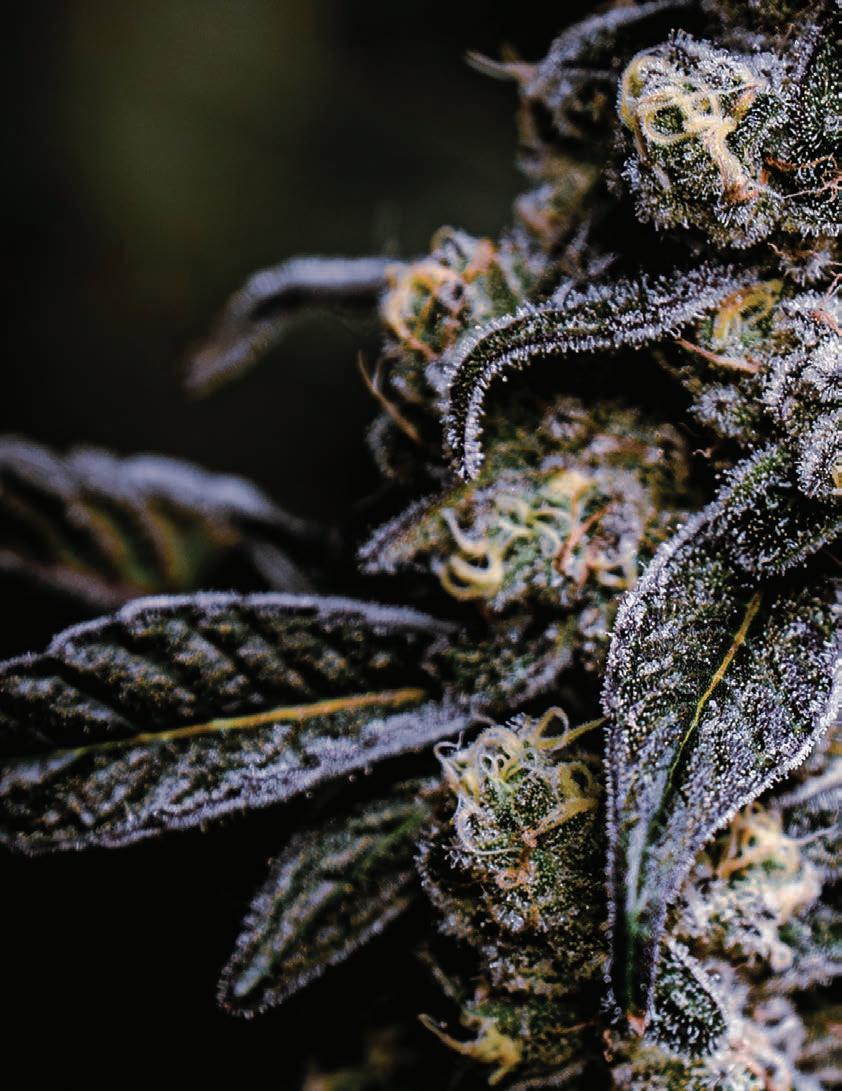

Other bacteria will create hormones that the plant can use in root development. Some create antibiotics that the plant can use to fight off pathogens, both in the soil and above in the vegetation and flowers. Bacillus subtilis can even be used as a foliar spray to help control powdery mildew.
Bacteria can act as a pesticide in certain cases. For example, the strain bacillus thuringiensis is effective at killing the eggs of fungus gnats in the substrate. I personally use it regularly, along with a fungus named beauveria bassiana that kills thrip pupae in the soil.
There really are countless strains of bacteria that interact with plants in a beneficial way. Some are named for their shape, some for their function. Some are named after the microbiologist who discovered them. But as I mentioned above, some are pathogenic to plants. Here is a general rule that separates the two: air.
Some bacteria, as well as plant roots, need oxygen. These strains are aerobic, meaning they need oxygen to survive and flourish. Some bacteria are anaerobic, meaning they do not need oxygen to survive. The rule is aerobic bacteria are generally beneficial, and anaerobic bacteria are generally pathogenic or will cause issues.
By not overwatering your plants, allowing for pots to dry back at least 25% before you water again, and using a substrate that is designed to hold ample air when it is saturated, you will help ensure that beneficial bacteria remain dominant, greatly reducing the risk of infection by the troublesome strains of bacteria or fungi.
Plants do not need beneficial microbes to survive and thrive. They only need proper hydration and access to essential elements— modern hydroponic cultivation practices
have proven that. Call me a luddite, but I would suggest that in the interest of automation, efficiency, and progress, we’re often leaving a very critical component behind—that complex relationship between plants and the microscopic world living all around us. It encourages a more complex expression of both variety and concentration of secondary metabolites. I can taste the difference in my food, and I can certainly smell, taste, and experience the difference in my flower.
I’ll leave you with this thought…in the time it took to read this article, most of us inhaled hundreds, if not thousands, of active fungal spores. Until next time—if we survive.

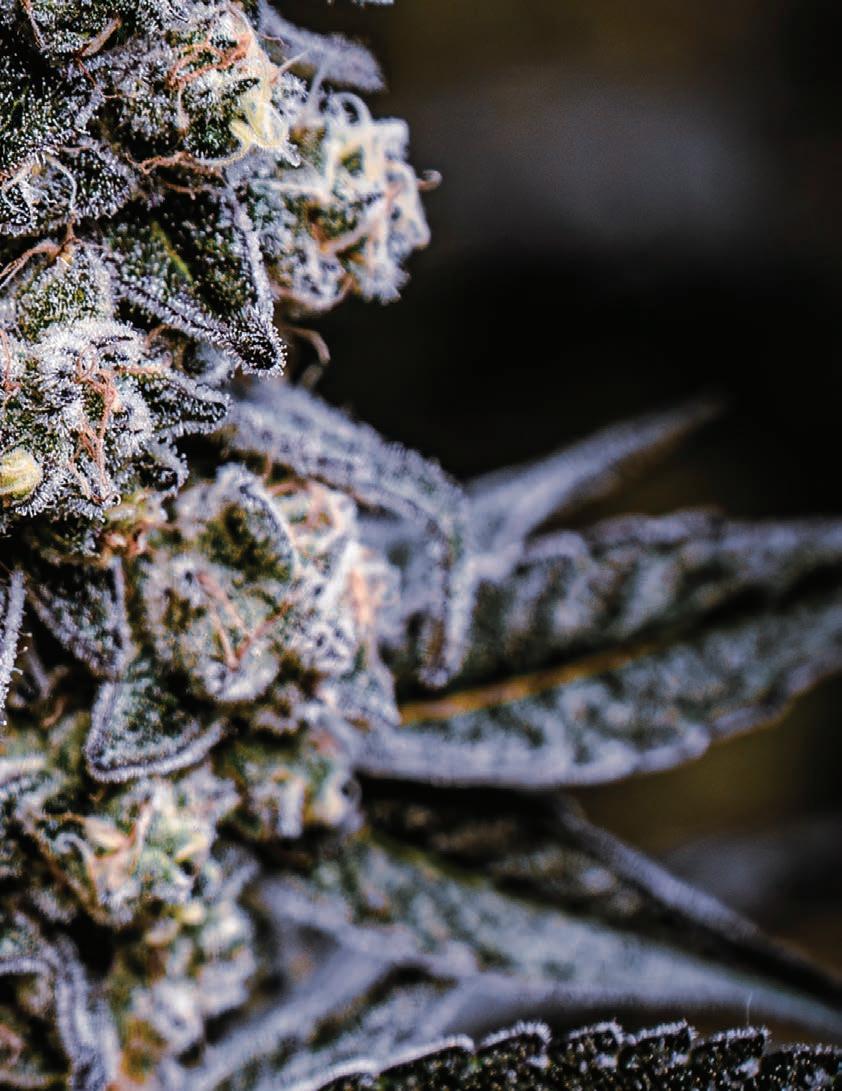



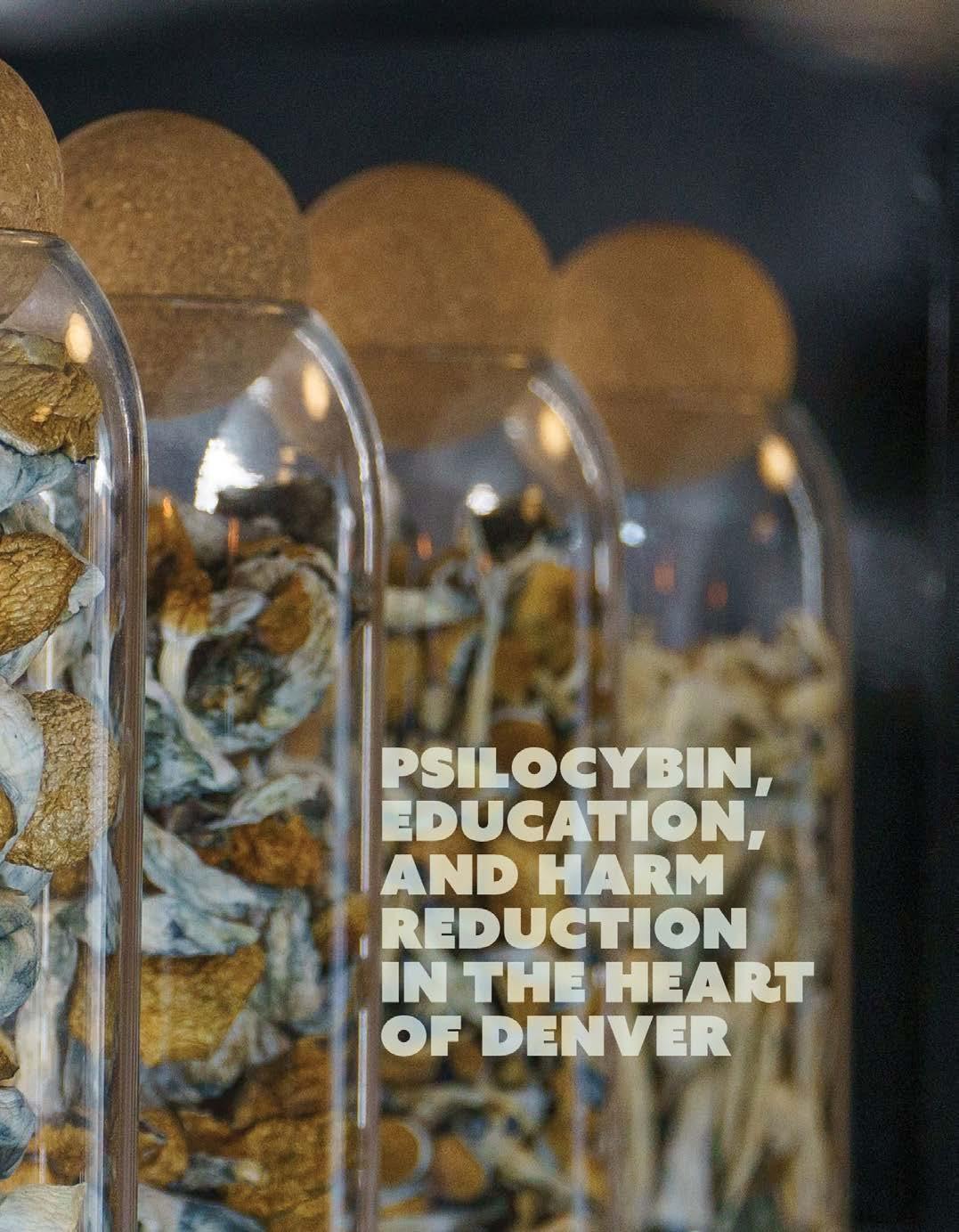

By: Bethany Niebauer
Jacob Marlega and Trevor Garofano are the two owners of Natural Medicine Growth Services, located in Denver, Colorado. Both are passionate and deeply knowledgeable about the healing properties of psilocybin mushrooms. Jacob has grown a variety of mushrooms over the course of his career including turkey tail, blue oyster, shiitake, lion’s mane, and psilocybin mushrooms. He offers customers a chance to shop with minimal risk, in a clean and sanitary environment thanks to his innovative approach under Colorado’s Natural Medicine program.
Customers, (who must be over the age of 21) can actually peruse a variety of products. The inventory includes dried mushrooms, infused teas, infused honeys, gummies, capsules, beverages, and even grow kits. All products are labeled with dosing instructions or directions for use. In addition to products, all customers will receive information about Harm Reduction. Natural Medicine Growth Strategies takes pride in educating consumers about the effects of psilocybin, proper dosage, the vulnerability that comes from ingesting psychoactive substances, and ways to improve a trip. Empowering consumers to have a pleasant experience is one way to reduce the harm and the associated risk of psychedelics.
Natural Medicine Growth Services is open for business in downtown Denver, seven days a week, by appointment only. Customers must reserve their spot in advance with a small deposit ($5), which can be credited to any purchases made. Appointments can be made through the website—magicmush.info
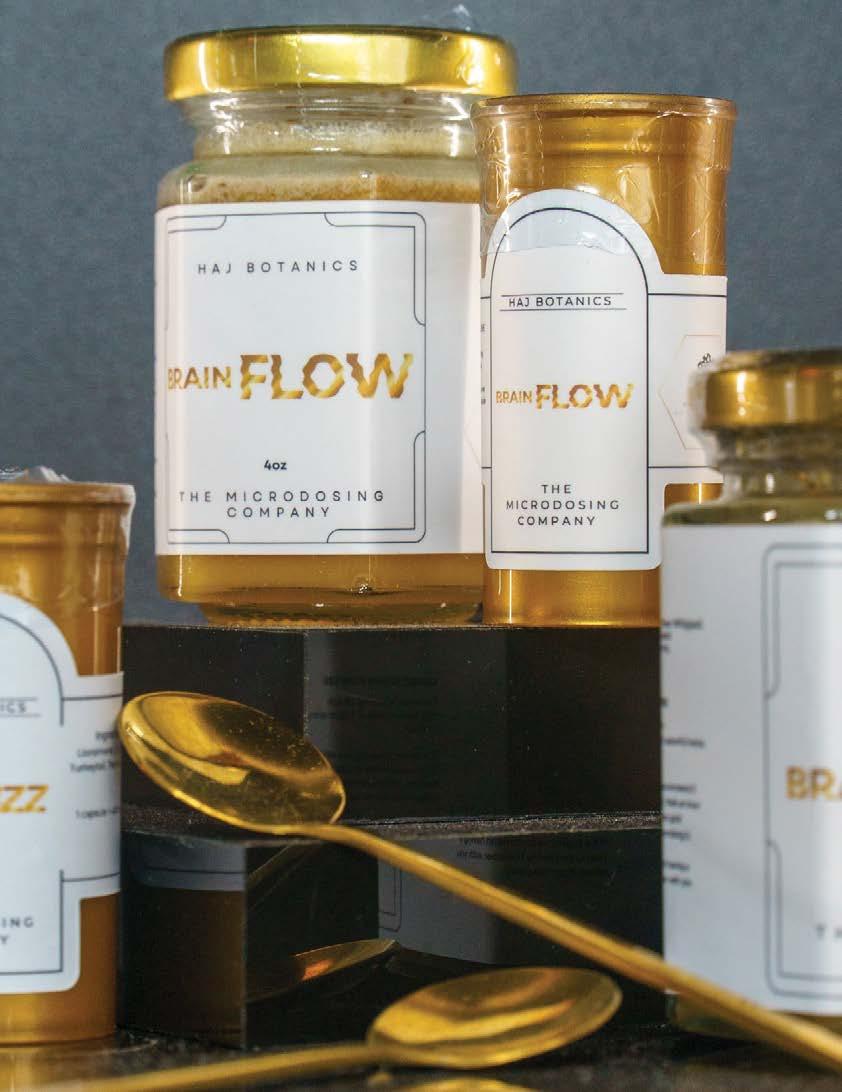



“ The mind is like a parachute; it works best when it’s open. ” —Frank Zappa

Psilocybin is a naturally occurring psychedelic compound found in nearly 200 different species of mushrooms, which the body converts into psilocin to activate serotonin receptors and alter perception, mood, and cognition. On the street, it’s the key to ego death, spirit healing, and tripping your face off in the woods with your demons and ancestors.
Originally used as a surgical anesthetic, ketamine is a dissociative compound that blocks NMDA receptors and is now gaining traction in psychedelic therapy for depression and PTSD. On the street, it’s a dreamy, numbed-out vortex where time folds in on itself and your body becomes a distant rumor.
LSD (lysergic acid diethylamide) is a semi-synthetic psychedelic discovered in 1938 that profoundly alters perception by stimulating serotonin receptors in the brain. One hit and suddenly colors breathe, thoughts spiral, and your sense of self dissolves into the infinite web of existence.
Ayahuasca is a traditional Amazonian "tea" brew made from the Banisteriopsis caapi vine and DMTcontaining plants, creating a potent mix that allows for an extended, active DMT experience. It’s not just a trip, it’s soul surgery that drags your shadows out into the jungle and demands you sit with them.
Cannabis is the most misunderstood, stigmatized, over-regulated plant on the planet. Its trichomes are loaded with cannabinoid medicines like THC, CBG, CBN, CBC, and CBD that interact with the endocannabinoid system to regulate mood, pain, appetite, and memory. It’s the sacred plant of the people that's also political, and can be relaxing, uplifting, mood-altering, revealing, and sometimes the gateway to deeper psychedelia all on its own.
DMT (N, N-Dimethyltryptamine) is an ultra-powerful tryptamine found in nature and in the human body, known for launching users into intense, fast-acting visionary states. Blink and you’re with machine elves one minute, ancient gods the next. It’s the closest thing we’ve got to a rocketship for the soul.


By Jessica Reilly-Chevalier & Dustin Hoxworth
(from the Ancient Greek psychē 'soul, spirit, mind' and naútēs 'sailor, navigator') refers both to a methodology for describing and explaining the subjective effects of altered states of consciousness, including those induced by meditation or mind-altering substances, and to a research group in which the researcher voluntarily immerses themselves into an altered mental state in order to explore the accompanying experiences.

K 2 (Spice) K2 or Spice is a synthetic cannabinoid sprayed onto plant material, designed to mimic THC. It’s often triggering dangerous, unpredictable reactions due to inconsistent chemistry. It’s the knockoff weed that sometimes smacks like a panic-drenched trip straight to the ER. Remember folks, legal doesn’t mean safe.
Mesacaline Mescaline is a naturally occurring psychedelic alkaloid found in peyote, San Pedro, and Peruvian torch cacti, offering gentle, empathic, and highly visual experiences. It doesn’t just show you the universe, it lets you feel it pulsing inside your chest.
Peyote Peyote is a small cactus native to North America containing mescaline, used ceremonially for thousands of years by Indigenous peoples for healing and spiritual insight. It’s a slow, sacred medicine that humbles you with visions and connects you to the land, the stars, and everything in between.
Salvia Salvia divinorum is a legal (in some places) dissociative plant that activates kappa-opioid receptors and induces ultra-brief, often intense out-ofbody experiences. One hit can flip your world sideways, suck you into a cartoon, or make you forget your own name, all in under 10 minutes.
Ibogaine Derived from the root bark of the African iboga plant, it is a powerful alkaloid that resets dopamine systems and is studied for its ability to interrupt addiction cycles. It can be a brutal, marathon journey through personal hell and ancestral memory that leaves many reborn or broken.
Amanita Muscaria Amanita muscaria is a mushroom containing ibotenic acid and muscimol, which produce sedative, dissociative, and deliriant effects totally different from psilocybin. This is the OG red-cap from folklore that's disorienting, mythic, and more like dreamwalking through a fever than a classic “trip.”
Nitrous Oxide Nitrous oxide, AKA laughing gas, disrupts oxygen and NMDA receptor function to deliver brief but intense states of euphoria, detachment, and auditory distortion. Whether at the dentist or in a parking lot balloon hit, it’s a few seconds of cosmic bliss or pure weirdness, depending on your set and setting.
2 C-X (Research Chemicals)
The 2C-X family (like 2C-B, 2C-I, 2C-E) are synthetic phenethylamines developed by Alexander Shulgin that blend psychedelic visuals with stimulant-like effects. They're designer drugs; some beautiful, some sketchy, but always a chemistry class away from either bliss or chaos.
Disclaimer: not every dissociative, sedative, or anesthetic was included
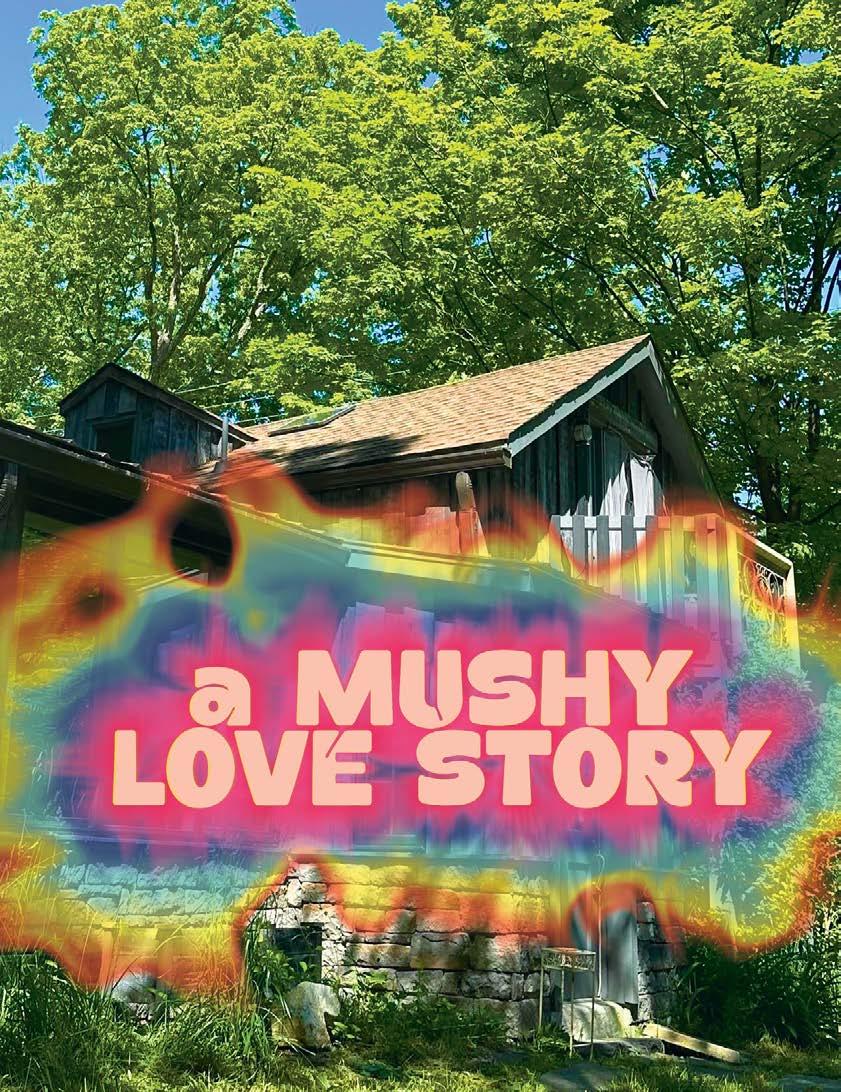
it’s the kind of cliche that could make up the plot line of your typical Judd Apatow film—post midlife crisis, ex-corporate marketer wife, and current midlife crisis, grade school teacher husband spend a long weekend in a cabin Upstate to reconnect and celebrate their 10-year wedding anniversary… on shrooms.
Okay, now that I read it back to myself, it sounds more like the opening scene of an A24 horror flick than it does a romantic comedy, but I promise it’s neither of those things—though if Mr. Apatow or any of the A24 execs are reading this: have your people call my people.
In actuality, this piece is merely a chronological list of my ten most memorable mushroom mentations from our 10-Year Anniversary Memorial Day Weekend TripTrip—a love note, inspired by nature’s biggest champion of perspective. But first, the details:
Following a LinkedIn post reshare by the renowned Bobby Nuggz—if you can’t trust Bobby Nuggz, who can you trust?—I immediately checked out Cody Reeves’ shop at Mystic-Fruits.com. The website experience was super easy and totally straight-forward… almost unexpectedly so. Gone are the days of sketchy plugs and sneaky exchanges—thank Goddess for that!
I ordered two types from Mystic Fruits; both came as whole mushrooms. One was a more visual strain called SNAPE (Starry Night APE), and the other was a more relaxing strain called DC Villain. This experience was brought to you by the latter: DC Villains.
A couple weeks later, my husband, myself, and the DC Villain (relax) strain we chose to consume, were ready for our aforementioned TripTrip! I’ll be the first to admit, I’m a bit of a psychedelics lightweight—but my dosage on this particular day was absolute perfection.
We split 4 grams between the two of us and, so it began:
1. Should I take my glasses off? If I do, I’m blind, but much more comfy. If I don’t, I can see clearly, but not for myself. Fuck it! I have four (or five) other senses; let’s put those to use instead.
2. Cold, dark room = cold, dark feelings. It feels impossible to change the conditions around me. But I *can* create new conditions that work better for me in this moment. Focus less on the conditions I can’t change, and more on changing the ones I can.

I ordered the “Mycologists Choice” package and received a wonderful email from Cody, right away, explaining the products I’d be receiving, the shipping info, and letting me know what to expect from the mushrooms— both by look and by effect. My mushrooms arrived fast, the packaging was lovely (seriously!), and the little added extras (a crocheted mushroom plushy, a mushroom keyring, and some “In Case of Emergency” Valerian Root capsules) were a beautiful touch.
3. There’s a reason we felt compelled to build pillow/blanket forts when we were kids, I think. It’s fun—and a little challenging. And it results in a perfect, nonconformist combo of soft, warm, comfiness. We need more childlike whimsy in our lives: the more childlike whimsy, the merrier.
4. Why are we taught to let go of so many things that felt natural to us as kids? If it’s our most natural instinct to do something, who decided we should instead take on the weight of everything and everyone else, commoditize our free will, and forget how to let ourselves be natural? That doesn’t feel right.
5. This, though? Being here… in this perfect little pillow/ blanket fort with you? This feels natural. It’s so easy and simple—like we’ve done this before lifetimes ago and in every lifetime together since. It’s second nature.
6. And maybe that’s the point: nature. In all its complexities, it’s so simple. Que sera sera, right? And whatever has been will be again—nature finds a way. So does love.
7. Fifteen years with you by my side—ten as my husband, and now a couple more hours as my partner in pillow palace production—and it still feels natural to fall more and more in love with you. And more and more in love with who I am when I’m with you.
8. This is what connection feels like.
9. This is what love feels like.
10. Why the fuck would anyone make mushrooms illegal?
“The mystical experience is the birthright of every human being.” —Stanislav Grof
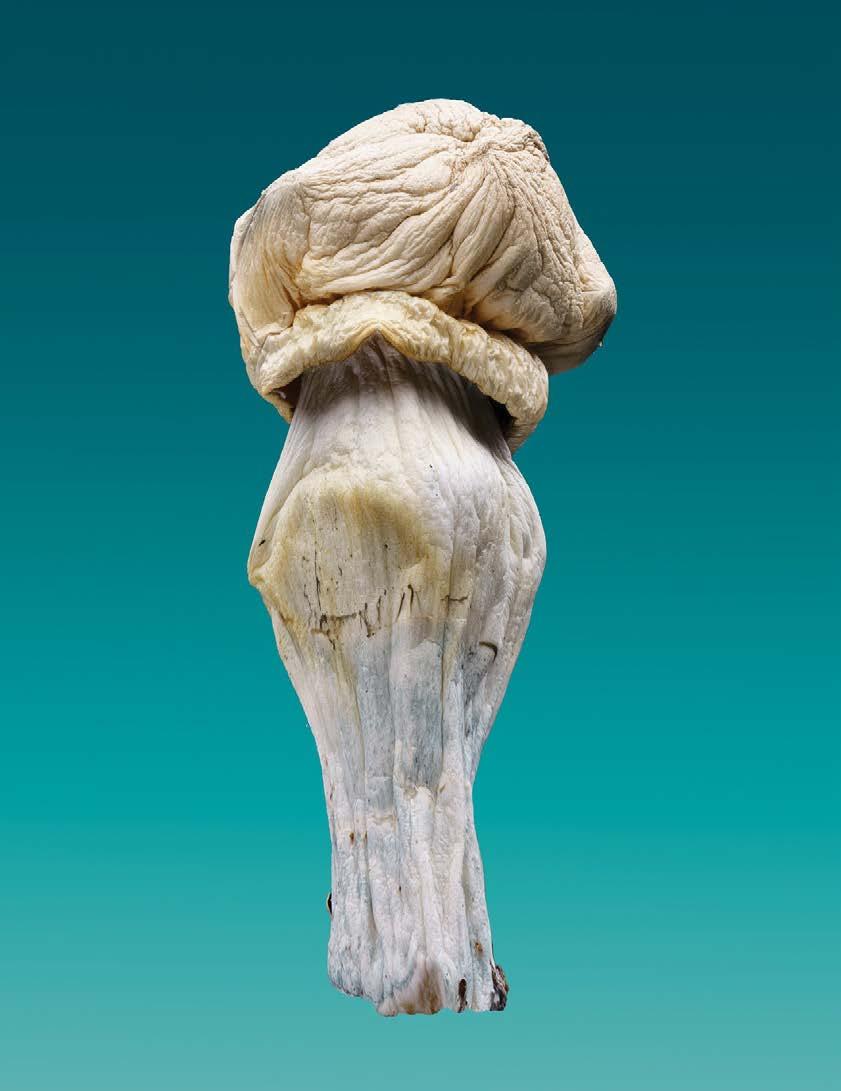

If your revenue is fire but your profits are smoke, basic tax planning is the most likely culprit.
With an optimized tax approach you can limit your liability and reinvest profits to build your operation.
We provide expert financial and tax planning and preparation solutions that nourish your business’s roots.


Schedule a free consultation to get your operation ready to grow.



By Jodi Green, Matthew Brockmeier, and Karina Bashir, Antithesis Law PC
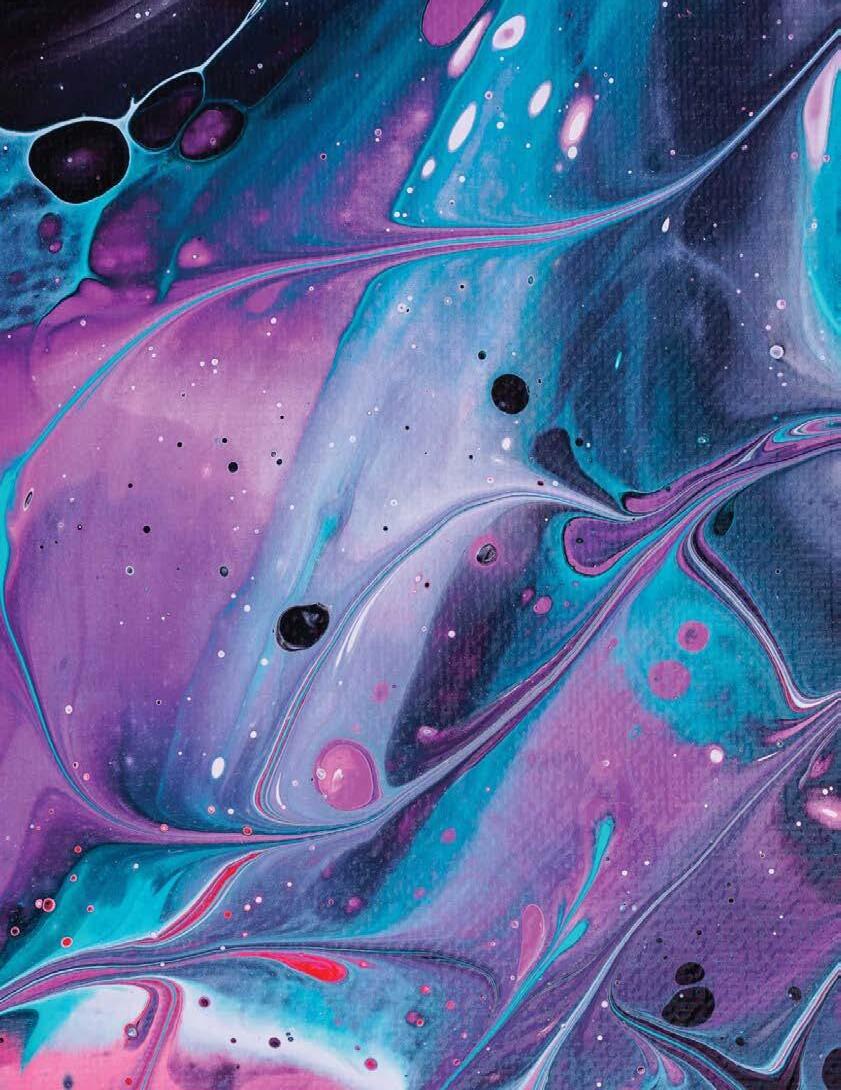
The psychedelic ecosystem is undergoing a transformative shift, much like the early days of the regulated cannabis industry, moving from an illicit underground world toward a regulated economy.
Legislative frameworks in Oregon and Colorado provide a structured pathway for underground operators to gain legitimacy and stability. Yet, obstacles persist, including deep mistrust between the underground and regulators, concerns about indigenous reciprocity, prohibitive costs, and limitations in current frameworks that fail to address the full range of psychedelic practices.
Proponents of regulation believe it cultivates a safe and sustainable industry by ensuring transparency, proper labeling, accurate dosing, and adherence to safety protocols, while critics argue that if psychedelics truly posed significant risks warranting intense regulatory scrutiny and topdown consumer protection, their enduring popularity and widespread demand would defy explanation. Yet while underground self-regulation may have worked well in the past, illegal commercialization and e-commerce have changed the rules, allowing operators to profit from misrepresentations, without checks on quality controls.
Through collaboration, regulators and the psychedelic community can strive to build a unified, sustainable, and regulated ecosystem that ensures safety, equitable access, and a foundation for nationwide acceptance.
For decades, brave underground pioneers such as Sasha Shulgin, the Godfather of Ecstasy, risked legal and social repercussions to keep the flame of psychedelic medicine alive. These visionaries operated in a time when these compounds were heavily stigmatized, and their courageous contributions paved the way to the current state of psychedelic momentum, budding clinical research, and resurgence of public interest.
The underground ushered in a community dedicated to education, harm reduction, and expanding awareness of the use of psychedelics for therapeutic, spiritual, and recreational purposes, often operating with strong ethical principles despite legal risks. As psychedelics gain popularity and accessibility, however, risks associated with the underground are surfacing.
Some commentators believe that unregulated psychedelic products pose a significant risk to public health. A stark
example is the recent outbreak of illnesses tied to Diamond Shruumz-brand so-called “mushroom” edibles, which resulted in over 180 reported cases of severe illness across 34 states, including 73 hospitalizations and three deaths. Although the investigation did not reveal a clear answer to what caused the illnesses, the FDA discovered synthetic and pharmaceutical substances in these products—not mushrooms at all.
Similarly, in November 2024, California authorities confiscated and destroyed over $3,000,000 worth of PolkaDot Mushroom Magic bars that were suspected to contain 4-Acetoxy-DET and 4-Hydroxy DET, citing consumer health risks as the basis for their actions.
Bad actors attempting to take advantage of renewed interest in psychedelics are causing intensified scrutiny, posing increasing risks for underground operators, including raids, product recalls, and reputational damage.
Much like cannabis, the improvident War on Drugs has left deep scars on the relationship between regulators and the psychedelic underground. This history has fostered skepticism toward regulatory bodies perceived as complicit in decades of prohibitionist policies.
While most psychedelics remain federally illegal, regulatory structures in emerging legal markets, such as those in Oregon and Colorado, prioritize clinic-based supervised use models. While these approaches aim to legitimize psychedelics, they risk sidelining core underground practices, such as spiritual use. The financial barriers to entering the above-ground market are also steep.
The underground has long demonstrated the potential for self-regulation through community-driven initiatives, exemplified by organizations like DanceSafe and Hyphae Labs, which thrive and innovate outside traditional regulatory frameworks. But relying solely on self-regulation overlooks the opportunity for broader public trust, safety assurances, and equitable access that a well-designed legal framework can provide.
To bridge the divide, regulators must formally recognize the contributions of the underground community, integrating its models of harm reduction and education into legislation. Democratizing access to funding and reducing barriers to entry for small operators can also foster a more inclusive

legal market. For instance, providing grants for licensing fees and operational costs could alleviate financial burdens and incentivize participation from a diverse range of actors.
Of the current regulated models, Colorado may be the best fit for this transition.
Colorado’s Natural Medicine Health Act (NHMA) program offers flexibility and inclusivity through its innovative blend of personal-use decriminalization and state-regulated models. Compared to Oregon, where access is restricted to psilocybin available exclusively through costly treatments at statedesignated service centers, Colorado’s personal-use model provides for ceremonial and recreational uses of several psychedelics outside of the regulated model.
Though the NHMA’s personaluse model provides for payment for bona fide therapy and harm reduction services, it does not permit the retail sale of psychedelics. The NMHA’s regulated model establishes a structured and regulated system for the therapeutic use of psilocybin and related natural medicines, providing a comprehensive framework focused on ensuring public safety, standardizing practices, and providing pathways for licensing facilitators, manufacturers, cultivators, and testing facilities.
1. Facilitators: The NMHA’s structured pathways for facilitators allow both experienced practitioners and newcomers to enter the market while maintaining high safety and operational standards. All applicants must complete detailed training and certification, including courses on ethics, Colorado’s regulations, and practical facilitation skills.
specified education and experience criteria. The Clinical Facilitator license is open to those who fulfill the same requirements as a Facilitator but also hold a secondary professional license in Colorado that authorizes them to diagnose and treat medical or behavioral/mental health conditions.
Additionally, two ancillary licenses are defined. The "Distinguished Educator" license is intended for individuals with extensive experience in providing Natural Medicine Services, enabling them to offer these services within a training program. The "Training" license, available to individuals who complete 150 hours of didactic education, allows the licensee to charge for Natural Medicine Services during a supervised consultation period. Neither the Distinguished Educator nor the Training license is considered full-scope, meaning licensees cannot provide Natural Medicine Services independently.
The underground has long demonstrated the potential for selfregulation through community-driven initiatives, exemplified by organizations like DanceSafe and Hyphae Labs, which thrive and innovate outside traditional regulatory frameworks. But relying solely on selfregulation overlooks the opportunity for broader public trust, safety assurances, and equitable access that a well-designed legal framework can provide.

There are two types of full-scope licenses and two ancillary licenses. Full-scope licenses, which allow the holder to provide Natural Medicine Services independently, include the "Facilitator" and "Clinical Facilitator" licenses. The Facilitator license is available to individuals who meet the
2. Cultivators, Manufacturers & Testing Facilities: Colorado presents a significant opportunity for cultivators and manufacturers from other states currently operating in the grey market to transition into a fully legal and regulated environment. Licensing for cultivation, manufacturing, and testing of natural medicine in Colorado follows a tiered approach based on business models:
• Cultivators can store up to 5 kilograms of dried whole mushrooms under the standard cultivation tier, while microcultivators are allowed up to 750 grams, suitable for small therapy practices or individual facilitators.
• For manufacturing, a Natural Medicine Product Manufacturing license is required to produce any product other than whole, dried mushrooms, with manufacturers automatically permitted to produce capsules and tea bags. They can also obtain an Extraction Endorsement, which authorizes the production of chocolate, gummies, pressed tablets, and tinctures.
• Natural Medicine Testing Facilities, which can co-locate with marijuana testing labs, are certified by the Colorado Department of Health and Environment and accredited for specific tests. These facilities are currently restricted from testing unregulated natural medicine, though future provisions for personal use testing are anticipated.
3. Education and Training Programs: As mandatory training requirements for Facilitators increase, there is a growing demand for educational programs tailored to natural medicine facilitation. Companies can develop state-approved courses that meet the Department of Regulatory Agencies' standards, creating opportunities to train aspiring Facilitators. Regulations outline the criteria for program approval, including organizational standards, administrative responsibilities, recordkeeping, and faculty composition. Training programs must be approved by the Office of Natural Medicine to ensure graduates are eligible for licensure.
The psychedelic ecosystem is at a crucial crossroads, with regulatory frameworks like Colorado’s NMHA offering a structured pathway for businesses to transition from the illicit underground market into a legitimate, regulated ecosystem. The
success or failure of Colorado's innovative healing paradigm is a harbinger of the success of the larger psychedelic movement. However, achieving a sustainable above-ground market requires meaningful collaboration with the underground community, which has long played a vital role in preserving public access to psychedelics.
Both the underground and regulated industries are interdependent for long-term success. For the regulated programs to succeed, they must incorporate the needs of underground operators to assuage their concerns about participation. Without collaboration, the legal market will be vulnerable to regulatory shutdowns due to the rise in harm and misuse from unregulated products, while the underground remains exposed to enforcement risks.
By bridging this divide, psychedelic proponents can help build a unified, credible, and thriving ecosystem—one that safeguards public health, ensures equitable access, and paves the way for sustainable, nationwide policy. Only through collaboration can the full potential of psychedelics be realized, benefiting individuals, communities, and society at large.
For updates on psychedelic law issues, stay tuned in with Antithesis Law online, on Instagram, and on LinkedIn.
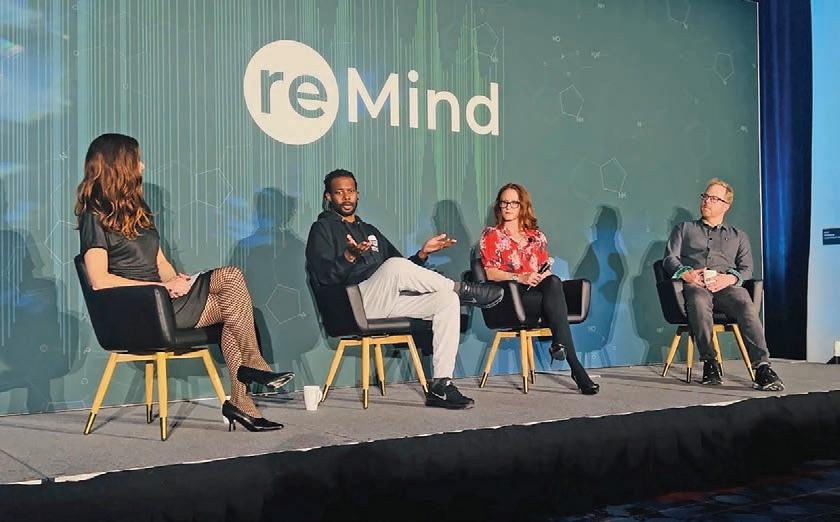
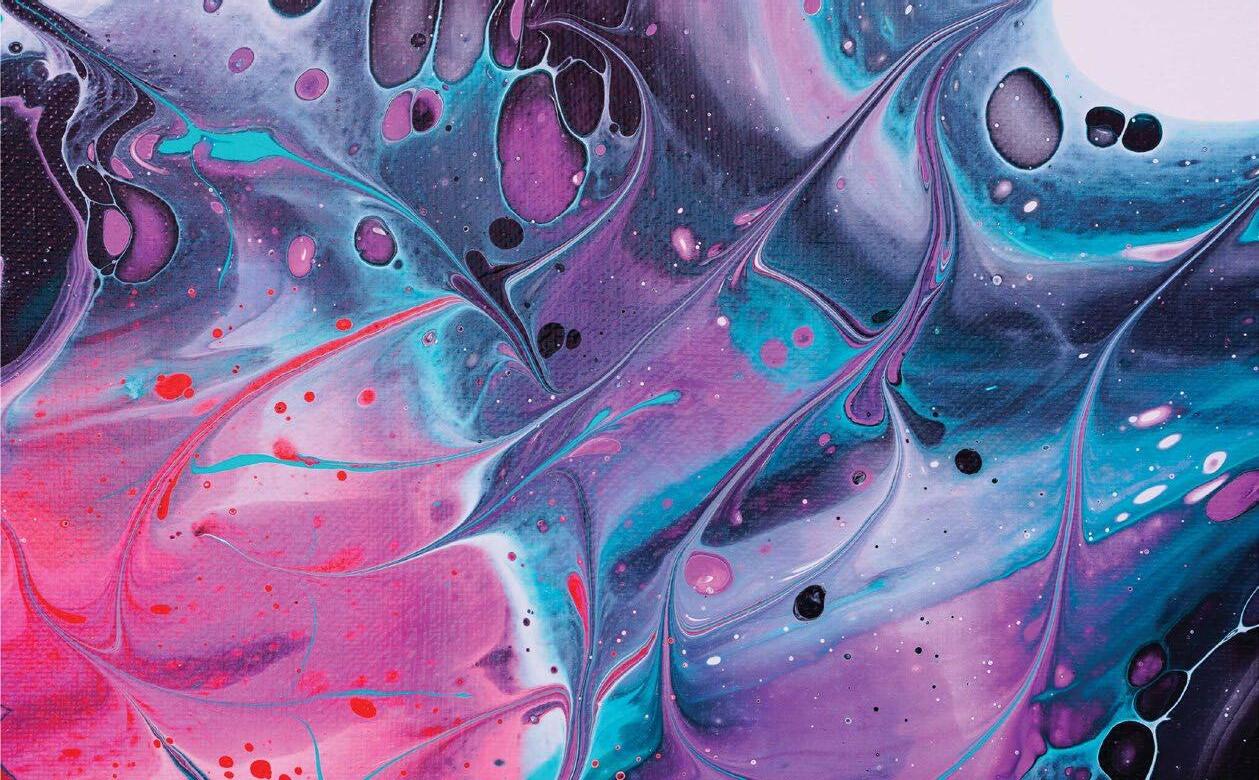
“ There is a wealth of information built into us ... tucked away in the genetic material in every one of our cells ... without some means of access, there is no way even to begin to guess at the extent and quality of what is there. The psychedelic drugs allow exploration of this interior world, and insights into its nature.”
—Alexander Shulgin
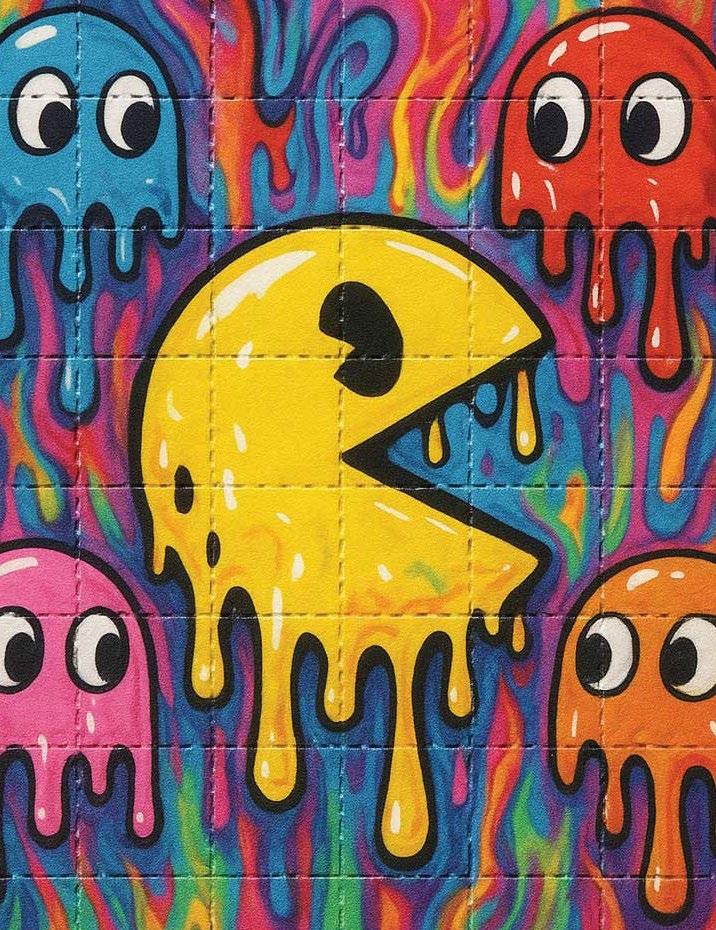

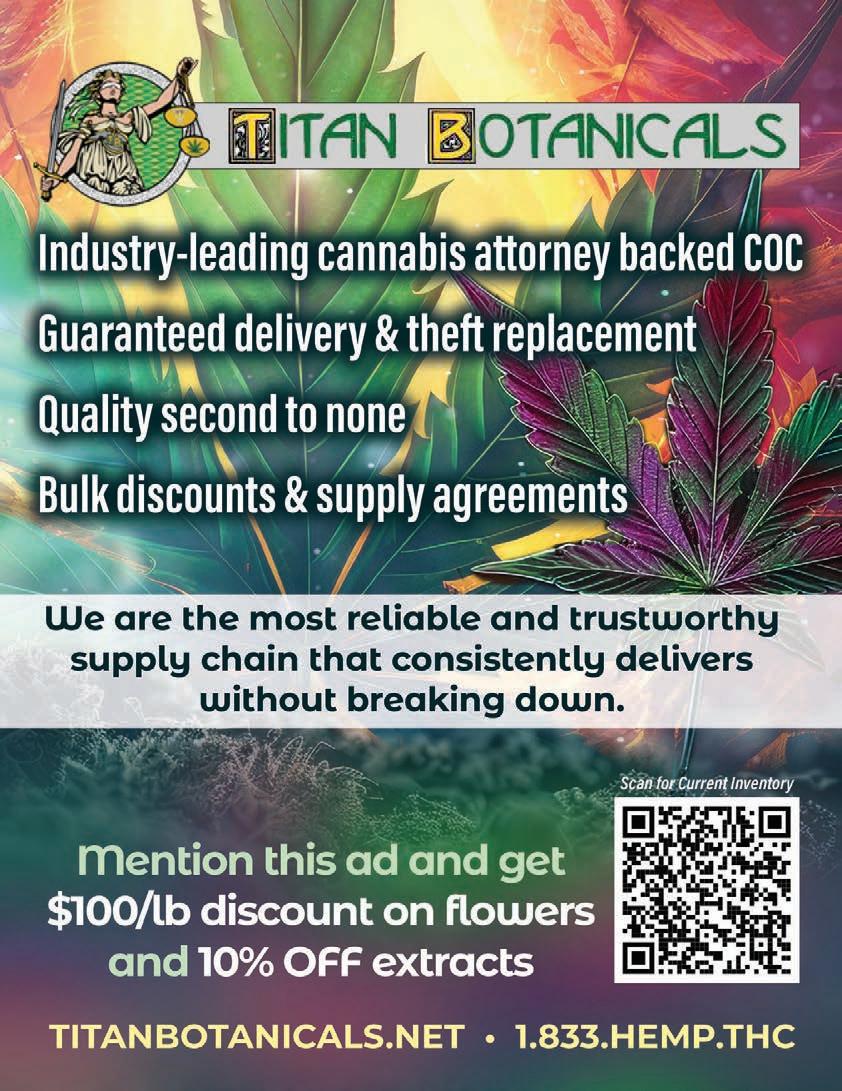
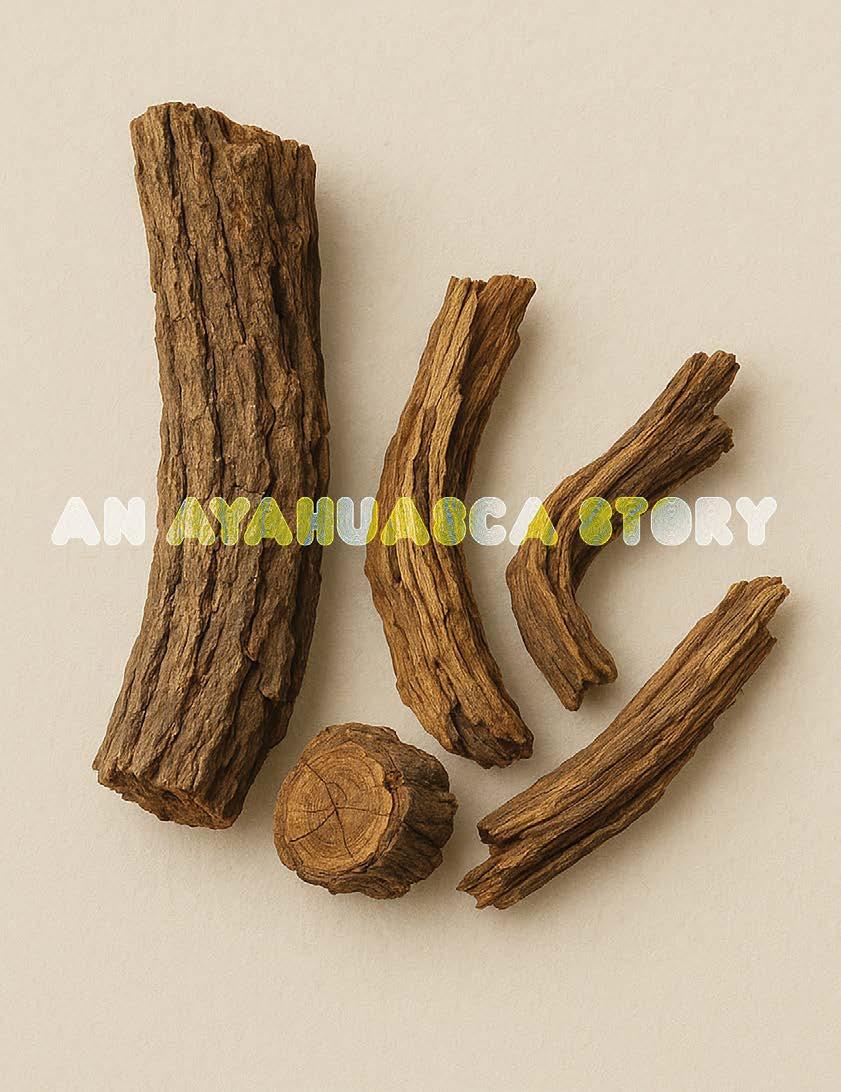
By Rob Sanchez
At the altar, the Shaman eyed me with an all-knowing smile before filling a small cup with ayahuasca and handing it over with a gentle Yawanawan blessing. I tossed back the thick, bitter, earthy brew and settled in for one of the most memorable nights of my life.
They say ayahuasca calls to you when it is time, something I didn’t quite understand until I felt the call weaving into my life. It kept coming up in conversations with podcast guests and friends, appearing unexpectedly in books, and showing up in documentaries and artists’ references. The synchronicity became too great to resist.
As an experienced psychonaut, I was too curious for my own good: excited to explore the altered state, but also more than a little worried about the experience. Knowing how challenging the introspective aspects of it can be, I did everything I possibly could to prepare for that challenge, to look at it as healing, and surrender myself to the medicine.
I signed up almost four months before the experience, so I had plenty of time to prepare physically, mentally, and spiritually. I started journaling more consistently, digging into past experiences, lingering regrets, and any emotional knots I could find. My thought was, “If I can face this stuff now, maybe Grandmother Ayahuasca won’t have to be so hard on me later.”
I also began practicing box breathing regularly to calm down, refocus, and sleep. Box breath is a simple but powerful technique: inhale for four seconds, hold for four, exhale for four seconds, hold again for four, and repeat. Even typing it out relaxes me. When experiences or events are challenging around psychedelics, you most often need to just relax, breathe, and not fight it, so I made sure I could
relax effortlessly. Pairing this with meditation, I was in a “zen” state of mind going into it.
Ayahuasca is known to be a little “jealous” too, so I also cut my use of cannabis completely for over one hundred days before the ceremony and psilocybin about a month before. The retreat suggested stopping all cannabis or other drug use for a week beforehand and two weeks after, but I was already on a moderation break, so I stuck with it. Sober Rob was barreling towards a date with destiny.
A few weeks beforehand, the dieta began, a kind of spiritual and physical cleanse that can vary from shaman to shaman. Always follow the guidelines you are given. Seven days out, I cut red meat, pork, pasta, bread, and caffeine. Water became my only drink, having at least two liters a day. Three days out, I ate mostly vegetables and soup with a little chicken while cutting out spices, garlic, and hot sauce. Finally, one day before I was fully vegetarian, feeling lighter physically and emotionally.
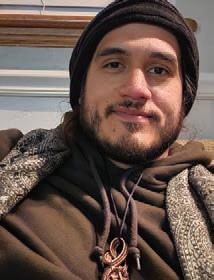

The retreat was run by loving, experienced facilitators, and the ceremony itself was run by traveling shamans from the Yawanawan tribe of the Amazon. There was almost a 1:1 ratio of participants to sitters. We were made to feel very safe and comfortable. Tapestries lined the big great hall we were in, and everyone had a nest of blankets and pillows to see them through the night.
The excitement and curiosity were almost too much to bear at this point and completely overtook any sense of fear. I was already there; no turning back now. We did a series of breathwork exercises and meditations to build the egregore (“collective consciousness”) and begin to shape the ceremonial space that we would all share over the next 12 hours. I just kept repeating to myself: accept and surrender, whatever comes up, be thankful and appreciative.
After everyone had been served the medicine, we sat in dark stillness with only the flames of candlelight flickering. I stared into the candlelight and explored my mindstate, looking for any telltale signs of the trip to come. The soft glow of the candlelight began to stretch out and expand; the corona of light had been only an inch or so before, but now reached the walls of the room. That’s when the music began.
it before getting sucked back into the magic of the moment. Tears occasionally rolled down my cheeks, and Grandmother, in her own way, spoke to me through symbolism and color, light and emotion.
She said, “Everything is okay, you know? There’s no need to worry or stress all the time.” I felt for the first, and maybe only, time I can remember a true sense of relaxation and presence. I had no worries, no concerns, no anxiety, no projects to work on or stuff to do, no identity to manage. I was just me, and I was everything, and everything was me.

There’s no way to capture the experience in words, but I keep trying. It was mentally, visually, and spiritually profound. The icaros played and sung by the shamans felt sacred and alive; the medicine responded favorably, starting with closed-eye rhythmic visuals that kaleidoscoped around with each beat of the drum. Then came open-eyed bliss and wonder. The room, the people, and the very air around me were alight with sacred geometry. Multi-colored triangles, octagons, and tetrahedrons all stacked and twisting on top of one another, creating an infinite architecture. It was as if I could see for a moment the very structure of reality, and it was utterly and simply beautiful.
At times, I’d realize my mouth was hung wide open in pure awe of the whole experience. I would smile with my whole soul so big, it would hurt my face, and I would try to shut
After ayahuasca had shown me the beauty of the cosmos, we went inward together, and the experience was still visual and stunning, but the introspection settled in. One striking example of this is when I found myself standing on an asteroid or some big piece of rock moving through space, worried about my life and what an impact I had made. Everything I have been working on or trying to build was all condensed and smashed together into a little rock, and I threw it out into space from where I stood. It floated onward at a comedically slow speed out into the nothingness, where it vanished. A primal fear of death arose to replace it. I thought, could all my work and effort in this life have been so meaningless?
But the medicine was playing a little game with me, it seems, because a moment later I realized that I won’t actually die because my sweet little daughter will live on for me, and that’s the important part. It sounds obvious saying it, but the depth of these realizations and the impact they made were intense and tearful. I’m a stoic family man in general, but the way this love for my daughter felt in that moment still lingers now; it was complete. The medicine had cracked me open to show me something I already knew, but apparently had not fully “felt”.
From that point onward, different vignettes and things played out from my life, interactions with family, past relationships, work life, friends, and more. I would observe and try to accept things as they were or forgive people for anything I held against them, and more importantly, forgive myself, something
I realized I didn’t do often enough. When things got difficult, I would box breathe and think of my daughter and my loving wife. They were like a spiritual blanket throughout the entire experience.
My second night with aya followed that same pattern, with a bit less of the pure joy and wonder from the first. I can’t help but think Grandmother was pleased with the preparation and work I put in beforehand, or at least acknowledged it by letting me see the beauty of the universe before the work began. I learned the next morning that my experience was unique; some had almost nothing happen, others had much more challenging nights, or found themselves in the bathroom and/or hovering over their bucket too often.
I did not have to purge during the experience, though there were a few moments where I was super nauseous and physically uncomfortable. I kept a small piece of dried palo santo with me to light and smell when needed. I find the scent of palo santo to be very grounding; it has a way of piercing the veil of psychedelia to help stabilize when needed.
Integration started right away as participants shared their experiences and were encouraged to look at their lives to see what needed to change or be reconsidered. Some very poignant and sad stories were present, showing the visceral
healing power of the medicine. The level of trauma some were dealing with was heartbreaking, but the group was there to listen and help them through it all with humility.
I think some of my smaller traumas, especially around workaholism and always “being busy,” were softened by the experience. I came away from it with a renewed and intensified commitment to family and an expanded sense of connection to my community and the people around me. Now, I find myself looking at people two cars over on the highway and feeling strangely connected in some unexplainable way, like we’re all in this together, which is a “deepity” in that it sounds simple, but there’s a real philosophical weight there that I feel much more than I did before. Oh, I also stopped drinking caffeine… except for Saturdays.
Ayahuasca wasn’t a magic fix, but it gave me a real perspective and a wider lens to see my life, habits, and relationships. I did not come back with all the answers, but I think I’m asking better questions now, so that’s a step in the right direction. I’m deeply grateful for the experience and to the Yawanan shamans. If ayahuasca is calling you, prepare with intention, show up humbly, and stay curious.
Remember, the work doesn’t end after the ceremony; that's where it really begins.
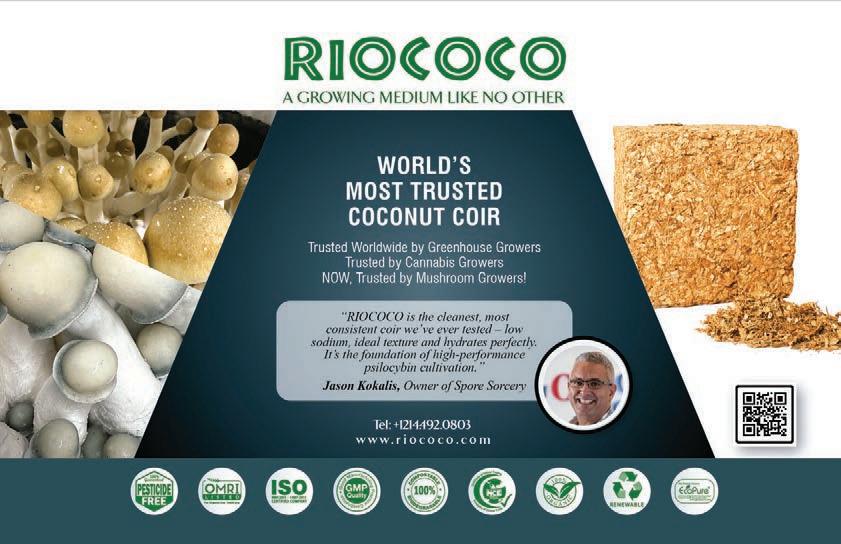

By Sara Payan
When you meet someone like Stephanie Karzon Abrams, you understand immediately that science and soul are not opposites—they’re dance partners.
A classically trained neuropharmacologist, Karzon Abrams cut her teeth in the ICU, treating traumatic brain injury patients with a toolkit that—while clinically sound— left her questioning the limits of symptom management. “I realized we were keeping people alive, but not really helping them live,” she told me. “They’d recover from the injury but be left with chronic symptoms—depression, insomnia, anxiety. We were throwing medication after medication at them, and that just didn’t feel like healing.”
Karzon Abrams’ pivot toward psychedelics wasn’t a rejection of science, but an evolution of it.
“I asked myself, what else is out there that actually helps reconnect people to themselves?”
That question launched her deep into the world of psychedelic-assisted therapy, eventually founding Beyond Consulting, a strategy and science consultancy working with psychedelic clinics, biotech firms, and nonprofit organizations.
“I realized my value wasn’t just in the lab,” she said. “It was in helping people rewire their relationships to their own minds.”
think that’s something a lot of people miss when they think of recreational versus medicinal use—recreation can be profoundly therapeutic.”
That shift in perspective, Abrams says, was catalyzed by her work with psychedelic medicines. “You can read all the data and understand the neurochemistry, but once you actually experience the effects, it’s different. You embody it. You don’t just know the mechanisms—you feel them.”
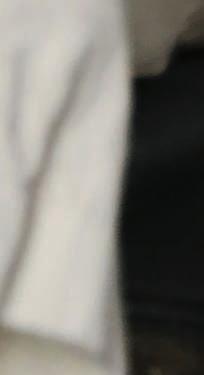
“Joy and healing go hand in hand. You don’t need permission to feel good— it’s your birthright.”
Karzon Abrams is also the cofounder of Public Secret, an artist collective and record label that brings Afrohouse and global groove to LA’s underground.
“We started hosting renegade mountaintop sets in Topanga. It wasn’t just about music—it was about creating community, catharsis, and joy.” Their pop-ups, called “Secret Sessions,” became instant hits—offthe-grid events driven by intention and heart.
But the collective isn’t just about the party. “There’s neuroscience behind dancing,” she explains. “When you’re on a dance floor, moving with others, sharing music, your brain is lighting up. Dopamine, serotonin, oxytocin, all these feel-good neurochemicals are flowing. That’s a psychedelic experience, without the substances.”
Karzon Abrams isn’t your typical white-coat pharmacologist. Yes, she knows how to calculate drug-to-plasma concentration ratios. But she also talks about cannabis with reverence and describes psychedelics as mirrors for the soul.
“I used to think cannabis was just a recreational tool,” she admits. “Now, even when I’m in a social setting, the way I engage with the plant is completely different. I enter the space with intention, and the plant meets me there. I
Karzon Abrams’ lens is clear: whether you’re in a clinic or at a rave, healing is about connection. And joy, she says, isn’t frivolous. It’s medicine.
Today, Karzon Abrams is also the clinical director at Modern Medicine Services (Mod Meds Life), a Los Angeles-based clinic blending integrative medicine with psychedelic-assisted therapy. “We believe people need

more than just treatment—they need care. Real, hightouch, mind-body-spirit healing.”
Their approach? Sixty-minute consultations with physicians who aren’t trying to push pills, but are there to listen. “We have a VibrAcoustic bed that uses sound frequencies to induce altered states. We do psychedelicinformed acupuncture. We’re building a sanctuary for homeostasis.”
Patients seek them out for treatment-resistant depression, PTSD, and existential distress, but also for something more elusive: wholeness. “Sometimes, people just want to feel joy again,” she says. “And we honor that.”
As a woman in science, Karzon Abrams is acutely aware of the hormonal rollercoaster many of her patients ride, often without guidance. “Even when things are ‘normal,’ our bodies are constantly shifting. Learning how to listen— to really be in tune with your own rhythms—is radical. Psychedelics have helped me do that. They’ve helped me embody my knowledge.”
It’s that embodiment that Karzon Abrams wishes more healthcare professionals could have access to. “We’ve siloed care into specializations, symptoms, and prescriptions. But people don’t live in silos. You can’t treat a person’s insomnia without asking why they’re not sleeping in the first place.”
Part of her work now includes educating on integrative women’s health, drawing from both traditional medicine and herbal therapeutics. “Chinese medicine literally saved me. I was skeptical, but it worked. I want other women to know they have options.”
When I asked Karzon Abrams what advice she had for someone considering their first psychedelic experience, she didn’t launch into molecules or metrics. She said with this: “Start with safety. Not just physical, but emotional. Who’s around you? Do you feel held? That matters more than people think.”
Her second piece of advice? Intention. “Call something in. It doesn’t have to be profound—maybe you just want more joy. But bring that into the experience.”
For people on medications or managing mental health issues, she strongly recommends checking with a pharmacist or psychedelic-informed doctor. “Pharmacists are incredibly underutilized,” she says. “They can help identify interactions your physician might miss. And
ketamine clinics, which are legal and regulated, are a great place to start, even if you’re just looking for education.”
Reclaiming the Word 'Psychedelic'
“There’s still so much stigma around the word psychedelic,” Karzon Abrams sighs. “But it literally means ‘soul manifesting.’ These experiences are about expanding the mind, not escaping it.”
She notes that some of the most therapeutic psychedelic experiences she’s seen didn’t even involve drugs. “Sound beds, group ceremony, dance, breathwork—there are so many ways to reach altered states that bring insight, healing, and release. Our bodies are hardwired for it.”
One of Karzon Abrams’ newest projects is a live talk series called The Chemistry of Joy, created with her friend Jane, a therapist. “It’s a conversation about the human experience—love, community, childhood, pain, connection. And it’s also a conversation about psychedelics, ritual, and reclaiming joy.”
She lights up when discussing the response from audiences. “People don’t realize how much they’re waiting for permission to feel joy. We want to give them that permission—and remind them they never needed it in the first place.”
In a world addicted to hustle and overwhelmed by crisis, Stephanie Karzon Abrams offers a refreshing counternarrative: that healing doesn’t have to be clinical, sterile, or joyless. That science and soul belong together. That cannabis, psychedelics, dance floors, and diagnostics are all just different threads in the same tapestry—tools for remembering who we really are.
And above all, that joy is not a luxury.
It’s our birthright.


“There is a world beyond ours, a world that is far away, nearby and invisible.”

